Dieser Artikel ist auch auf Deutsch verfügbar. Click here to find out more about Moldova!
The subject of this article is not an official tourist attraction like e.g. the Old Jewish Cemetery in Prague, but part of a difficult chapter of the history of the Republic of Moldova. Please keep this in mind if you choose to visit it.
The history of Bessarabia and therefore Moldova is closely linked to Jewish culture. Official records state that 225,637 out of a total of 1,936,392 inhabitants (about eleven percent) of the region identified themselves as Jewish in 1897. Jews made up about 46 percent of the population in the city of Chișinău (about 50,000 out of an estimated population of 110,000). Every larger city had a Jewish community with synagogues and cemeteries. There weren’t many Jews in the countryside, though.
Until the beginning of the 20th century the situation was stable. Russian newspaper Бессарабец (Bessarabetz, Bessarabian) often published openly anti-semitic headlines like “Death to all Jews” or “Crusade against the hated race!”, but there were no assaults. This sadly changed for the (much) worse in 1903.
In this year an Ukraininian boy of Christian faith called Mikhail Rybachenko was found dead in Dubăsari, about 40 kilometers north of Chișinău. Around the same time a young girl died in a Jewish hospital after an attempted suicide. Quickly a rumor, mainly created by Бессарабец, spread across the country: both children had allegedly been killed by Jews and their blood been used as part of a religious ritual. When another Russian newspaper called Свет (Svet, Light) and the russian-orthodox bishop chimed in, the situation escalated very quickly.
The first Pogrom started on April 19, 1903 and lasted for two days. The government didn’t try to stop the assaults, Police and Military watched passively. The New York Times reported about a mob led by priests walking through the streets on April 28, nine days after the indicent (communication still took a very long time back then). Initial reports put the death toll at 120 people, today we know that about 50 people died. But the mob also destroyed 700 houses and looted 600 stores, which must have been very visible in the cityscape back then.
The murder of Mikhail Rybachenko was later solved as not motivated by religious sentiments. The Russian Ambassador in the United States of America stated during an interview that the conflict had been between “between the peasants and the moneylenders, and not the Russians against the Jews”. According to this explanation, there was “no feeling against the Jew in Russia because of religion”, but “the Jew ruins the peasants, with the result that conflicts occur when the latter have lost all their worldly possessions and have nothing to live upon”.
The second Pogrom took place on October 19 and 20, 1905. It had initially started as a protest against the October Manifesto and the Russian Tsar, but quickly turned against the Jews as well. The Pogrom was part of a much bigger wave of similar events taking place all over the Russian Empire. Jewish Self-Defense Groups had formed after the Pogrom of 1903 and managed to fight off some of the violence. The death toll was lower than two years earlier and is put at 19 people.
As can already be seen by the formation of Self-Defense Groups, the political and social climate had changed dramatically. The Pogrom of 1905 marked the beginning of the emigration of tens of thousands of Jewish citizens to Europe or Palestine.
During World War II the German Reich had initially accepted that Bessarabia was in the Sowjet sphere of influence, but after the Axis Invasion into Russia in 1941 the Red Army pulled back and Romania conquered the territory. Together with German troops it immediately began with the deportation and extermination of various minorities. Ion Victor Antonescu, Premier Minister of Romania, advocated for the forced emigration of all Jews and Ukrainians because they “do not belong here at this time” – even if would make Romania would appear in history as “Barbarians” later.
Two thirds of the Jewish population of Bessarabia had already left the region before the Red Army had pulled out, but many tens of thousands of people hat been murdered until the Red Army finally managed to regain control over the territory in 1944. When World War II ended, most synagogues and other places of worship had been destroyed and Jewish culture had basically vanished from the country.
The Moldavian Autonomous Soviet Socialist Republic largely followed the example of the Sowjet Union when it came to religion. Initially it was thought that religion would automatically become less important as soon as people were enlightened and educated enough, so many constitutions guaranteed religious freedom. But when it became clear that religious communities were not disappearing, but could even become dangerous to the socialist party, the tone changed. Religious freedom was limited more and more over time, until the Russian-Orthodox Church was chosen as the base of a Sowjet Identity and all other denominations were outlawed.
The Jewish Population in Moldova had grown to a number of 98,001 members in 1970 again, but due to the growing limitations more and more people emigrated to Israel. The last census before the collapse of the Sowjet Union shows that the Jewish population had fallen down to just 65.672 individuals in 1989, only 19 years later. In 1964 just a single open synagogue was left in Chișinău, it still is the only one being used today. In 2014 there was an estimated number of about 15,000 Jews in the whole country left, 10,000 of which lived in the capital. This corresponds to about one twenty-fifth of the 1903 levels. Small societies are trying to rebuild some synagogues, but due to their small size it is very hard.
At the moment there are two Jewish cemeteries left in Chișinău. The first one is part of the large city cemetery St. Lazar in the north-western part of the city.
This article is about the second one near Strada Milano. The oldest graves go back to the 19th century, very few were created after the year 2000. A small society pays a keeper, but with an area of about a million square meters and an estimated number of 24.000 graves the areal is so vast that just the graves at the entrance can be cared for. As soon as you are a few meters from the main road at the entrance, the forces od nature have completely taken over. Many parts are so overgrown that it is no longer possible to enter them.
Despite the existence of a high wall with an iron fence and the keeper, incidents happen. In 2002 two teenagers damaged about 50 tombstones, according to the police investigations simply due to boredom. In April of 2013 illegal loggers entered the areal and started to log trees, damaging many graves. Some ways are still blocked by fallen branches and trunks. The city major declared his intention to rebuild the heavily damaged cemetery synagogue in 2015, but when we visited the cemetery in 2017, the necessary money hadn’t been collected yet.
To document this place a bit better and to show the many connections to Germany and other cultures, I have tried to translate the inscriptions as good as it was possible. I can read Cyrillic letters and read a bit of Russian and Romanian, but I can’t read any Hebrew.
Cyrillic: “КАПЛАН Иосиф Наумович”
Latin: “KAPLAN, Iosif Naumovich” (Kaplan means vicar in German)
Cyrillic: “ШОР ФАНЕЧКА”
Latin: “SHOR FANESHKA”
Cyrillic: “ТРОСТЯНЕЦКИЙ Арон-Нахман Вольфович”
Latin: “TROSTJANETZKIJ Aron-Nahman Vol’fovich”
Cyrillic top: “ШУСТЕР Герш Абрамович”
Latin top: “SCHUSTER Gersch Abramovich, beloved father and grandfather” (Schuster means shoemaker in German)
Cyrillic bottom: “ШУСТЕР Дора Самоиловна”
Latin bottom: “SCHUSTER Dora Samoilovna, beloved mother and grandmother”
Cyrillic left: “ЧЕРВИНCКИЙ Яков Исраилевич”
Latin left: “CHERVINSKIJ Jakob Israilevich”
Cyrillic right: “ЧЕРВИНCКАЯ РАИСА БОРИСОВНА”
Latin right: “CHERVINSKAJA RAISA BORISOVNA”
Cyrillic: “ПОЛОНСКАЯ Хова Гершевна”
Latin: “POLONSKAJA Hova Gerschevna, beloved mother”
Latin (in Romanian): “Reiza Fridman, died on Februar 8, 1937 at the age of 55. Rest in Peace”
Cyrillic top: “РОЙТМАН АРОН ЛЕЙБОВИЧ”
Latin top: “ROJTMAN ARON LEIBOVICH”
Cyrillic bottom: “РОЙТМАН ГОЛДА АБРАМОВНА”
Latin bottom: “ROJTMAN GOLDA ABRAMOVNA”
Cyrillic left top: “Врач Аибиндер Ребекка Арнолдовна”
Latin left top: “Doctor Aibinder Rebekka Arnoldova” (Aibinder is a somewhat German-sounding name)
Cyrillic left bottom: “Александре Аибиндер”
Latin left bottom: “Aleksandre Aibinder”
Cyrillic right: “фИГЛЯР (..illegible..)”
Latin right: “FIGLJAR (..illegible..)”
I don’t know if this tree had been logged during the illegal logging in 2013. The break line didn’t really look like it was four years old, though.
Cyrillic: “КАНТОР Рахил Шулемовна”
Latin: “KANTOR Rahil (Rachel?) Schulemovna” (Kantor means cantor or choirmaster in German)
Cyrillic: “Леитенант БОГУСЕВИЧ”
Latin: “Lieutnant Bogusevich”, quite obviously with the air force.
Inside views of the destroyed cemetery synagogue which the city major wants to rebuild since 2015.
Traces of vandalism seem to be removed more by the forces of nature and less intentionally…
Nature has completely reclaimed this space. We didn’t come across such a beautiful European green lizard during the rest of our stay in the country.
This post was written by Simon for One Man, One Map. The original can be found here. All rights reserved.

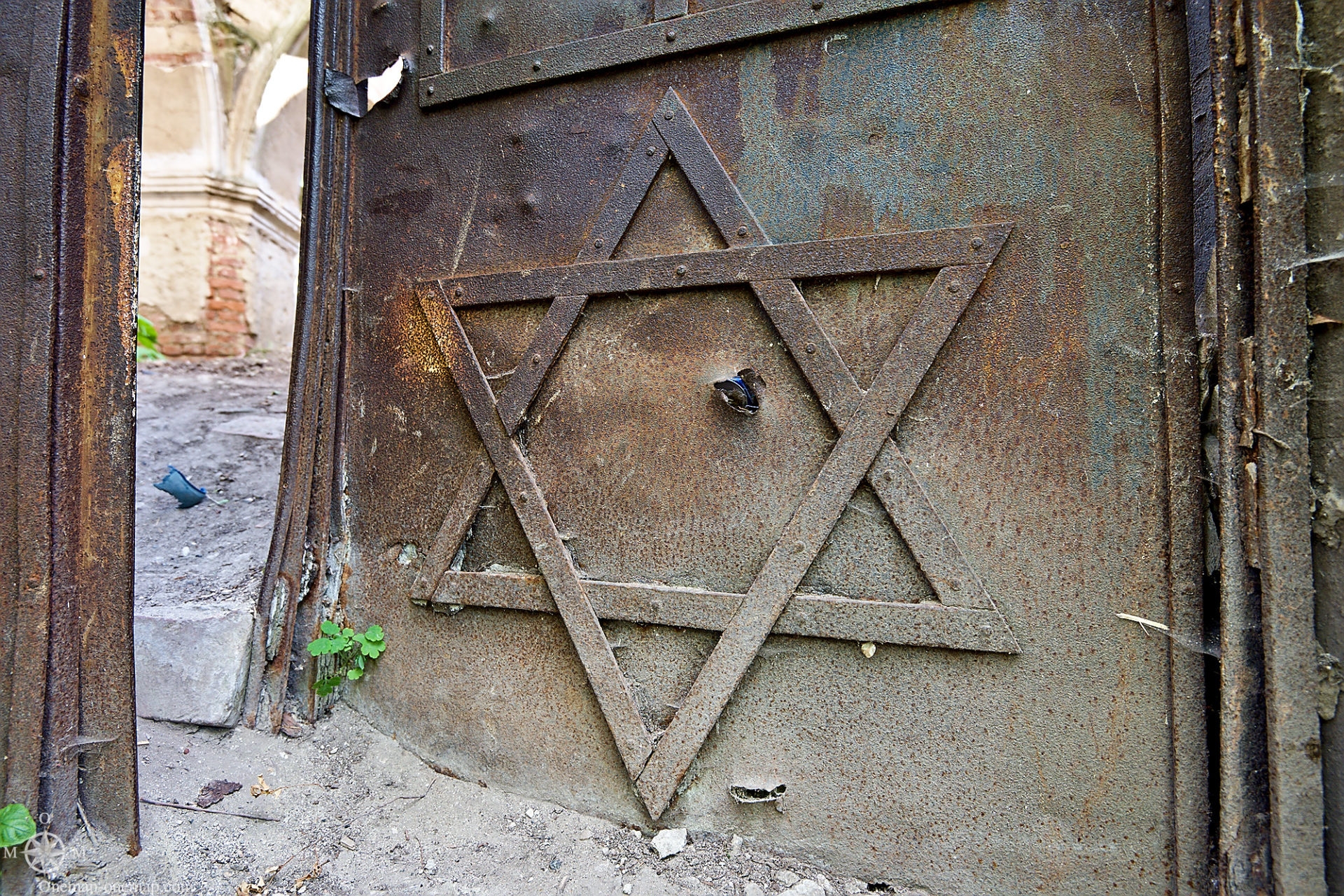
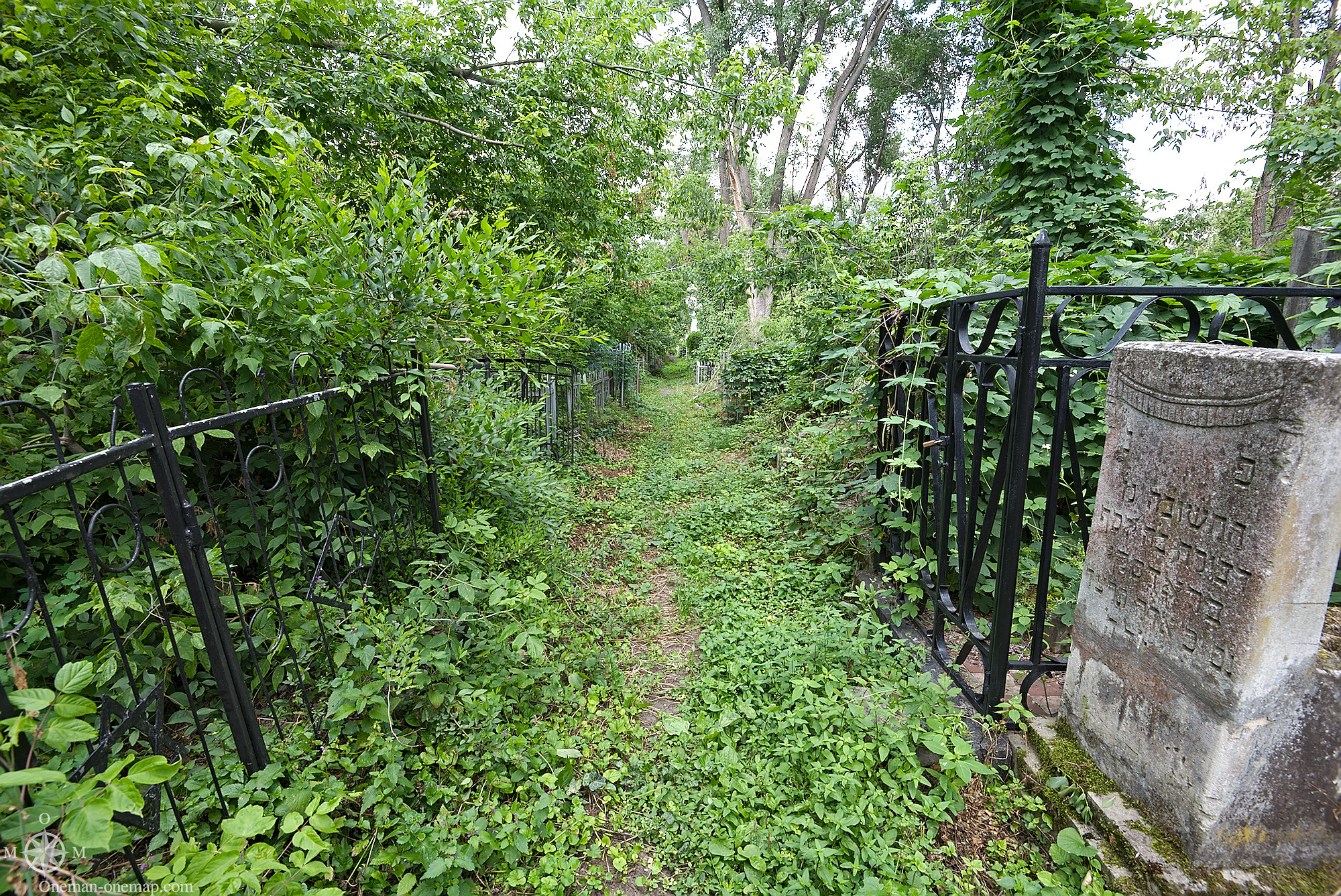
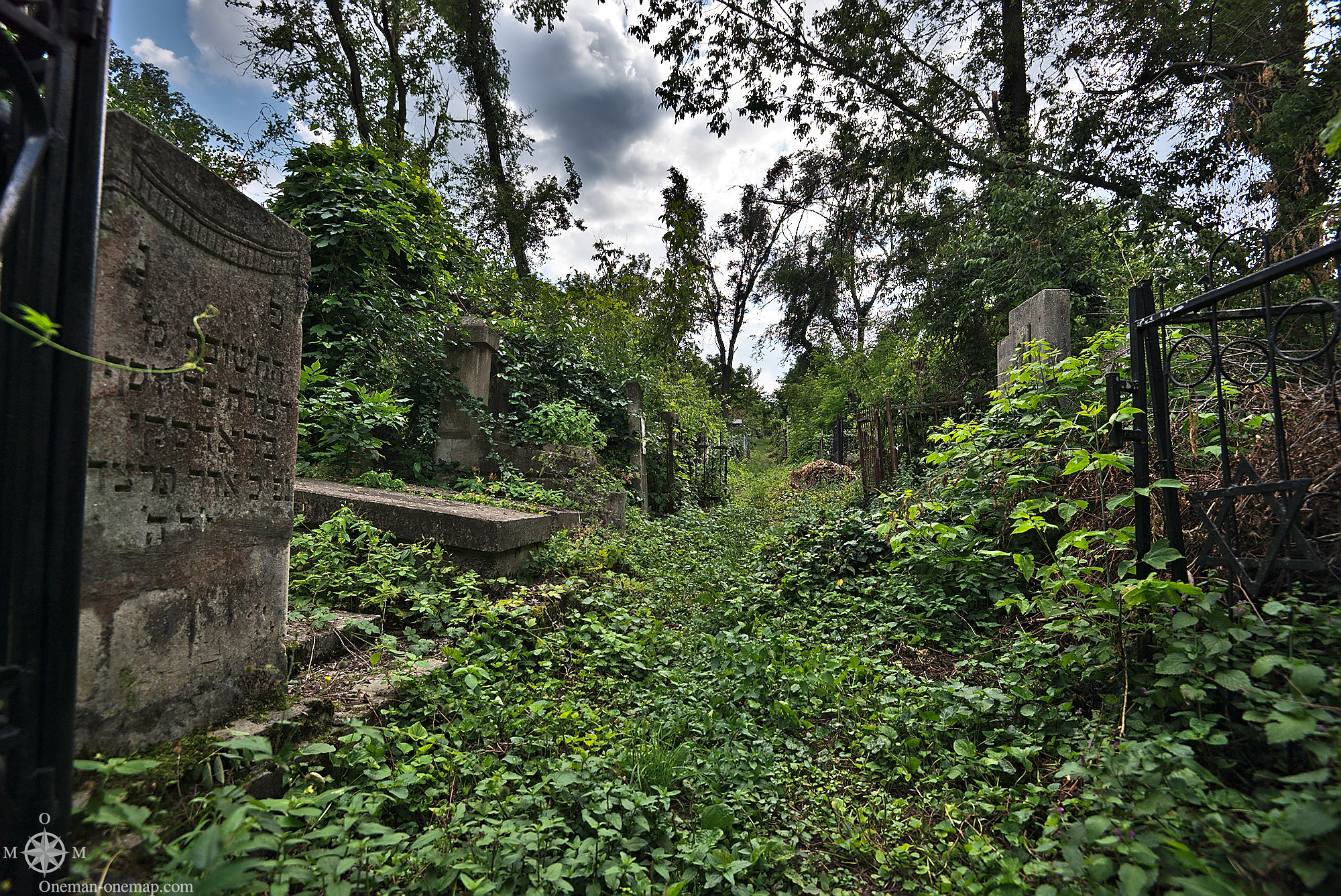
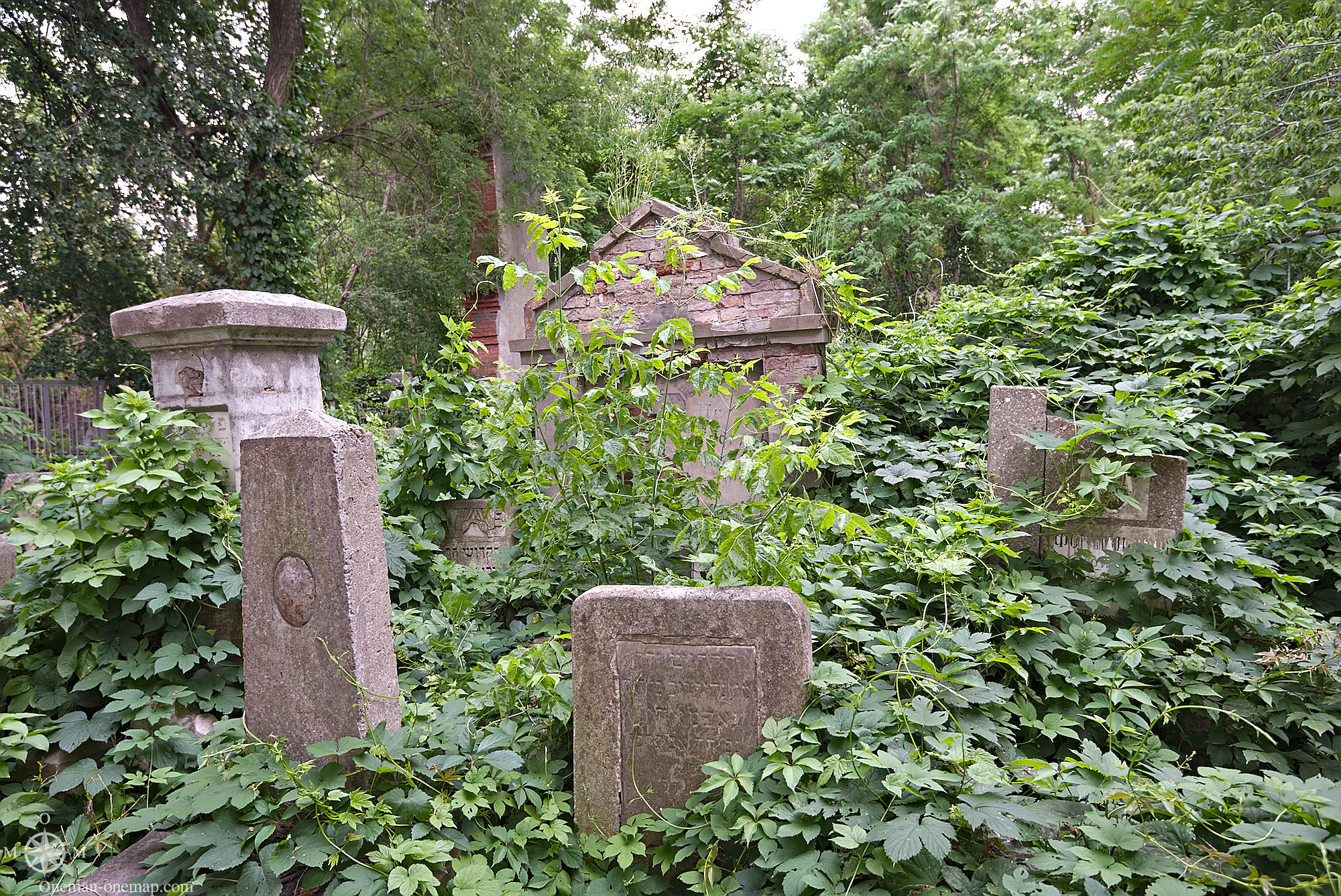
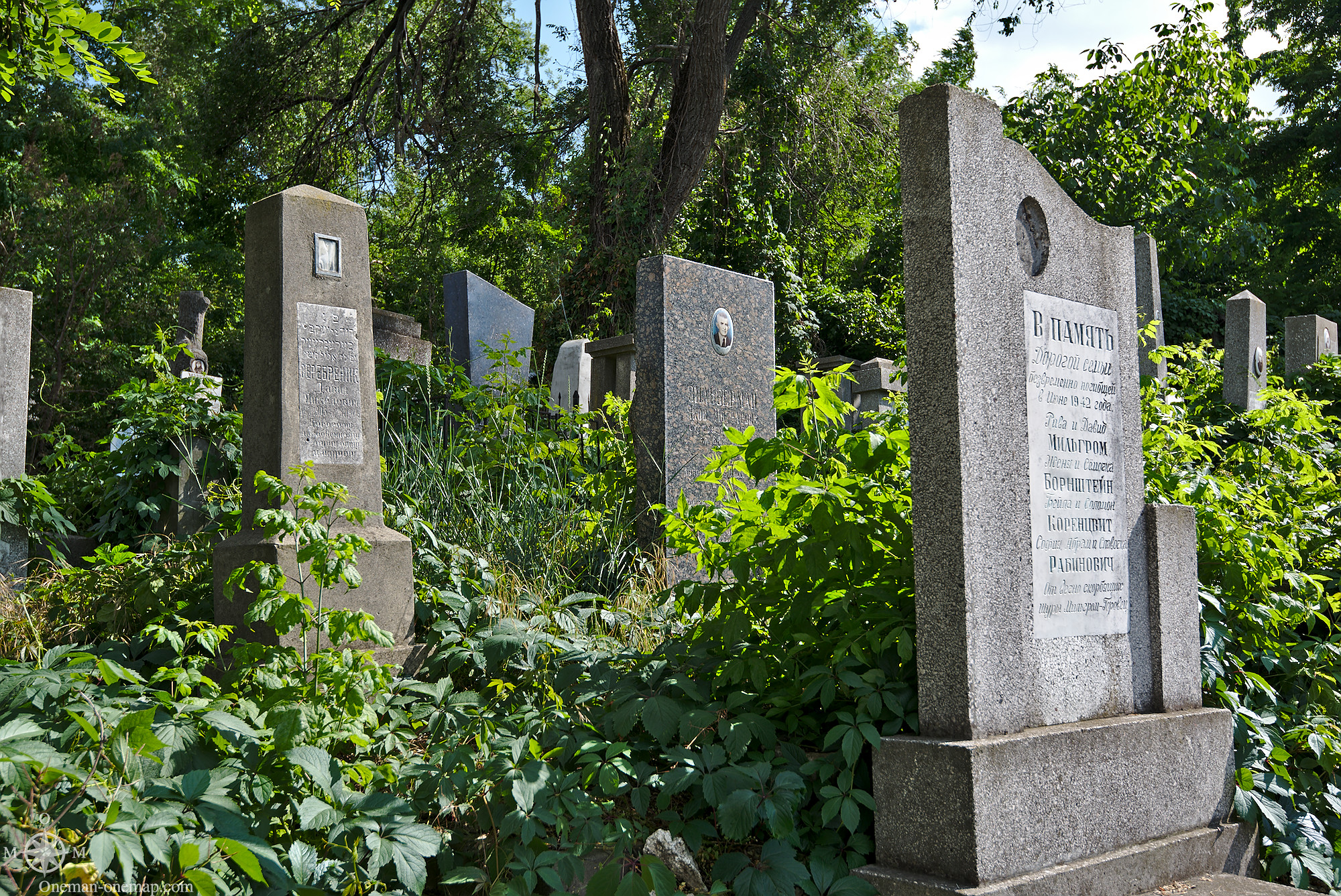
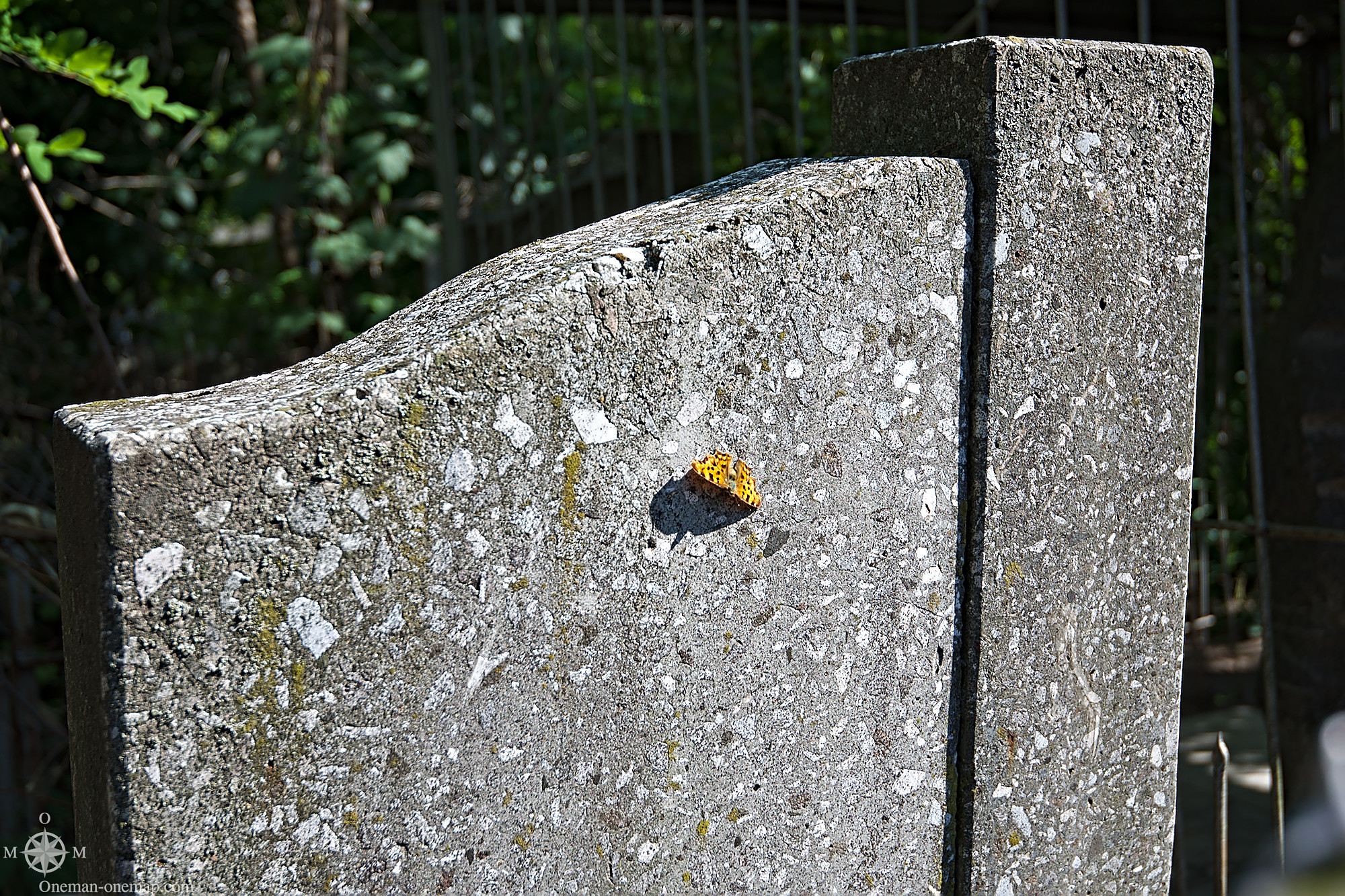
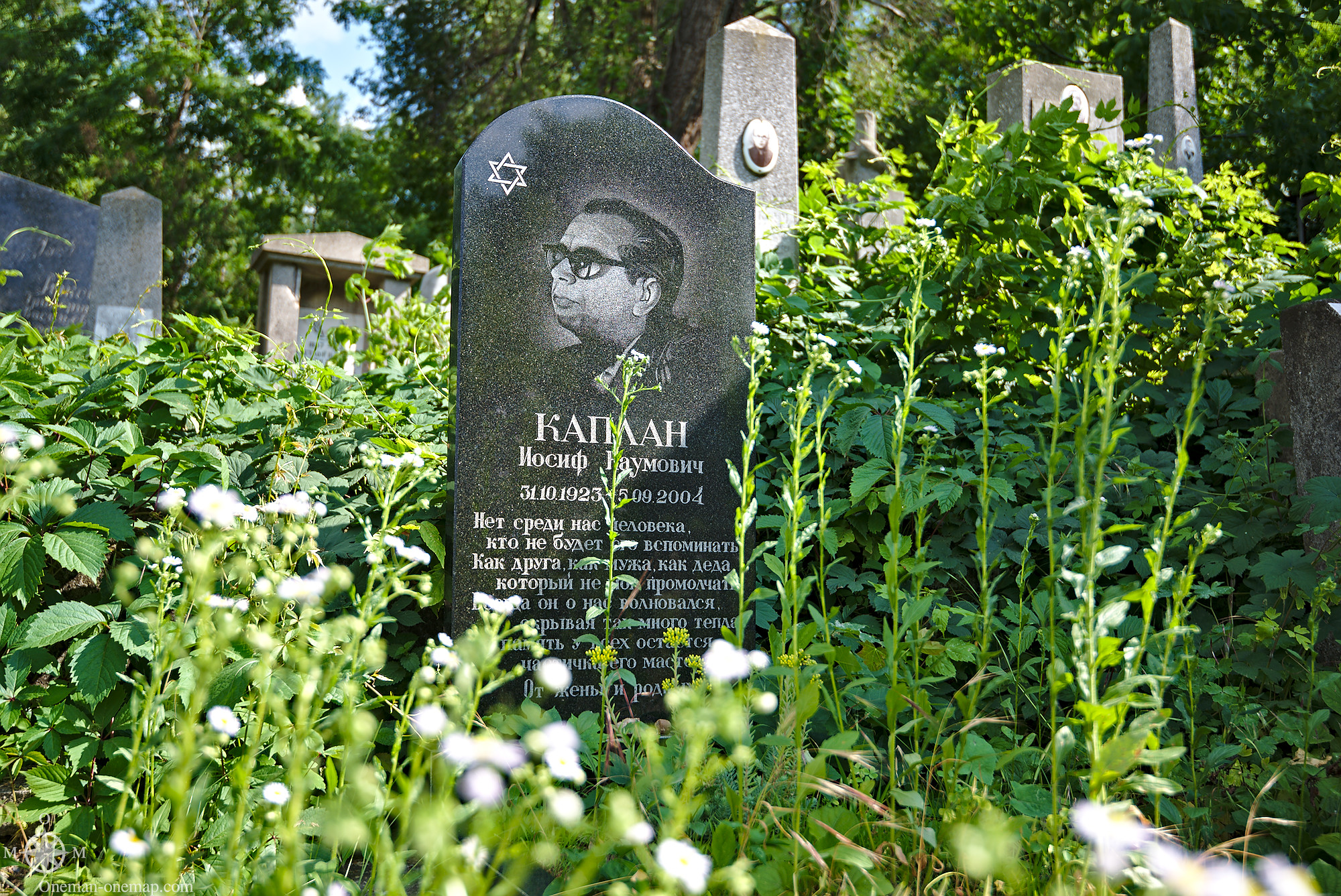
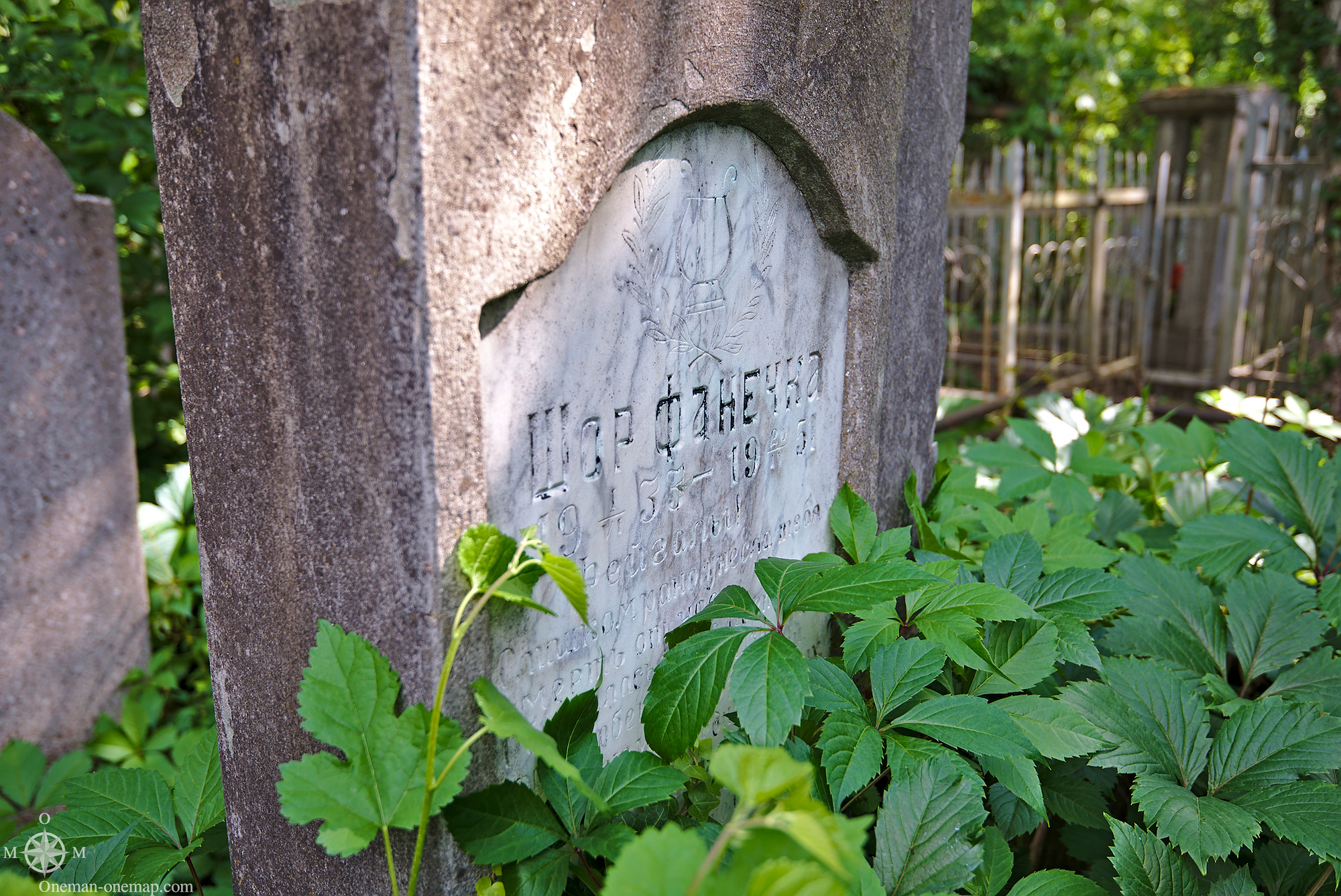
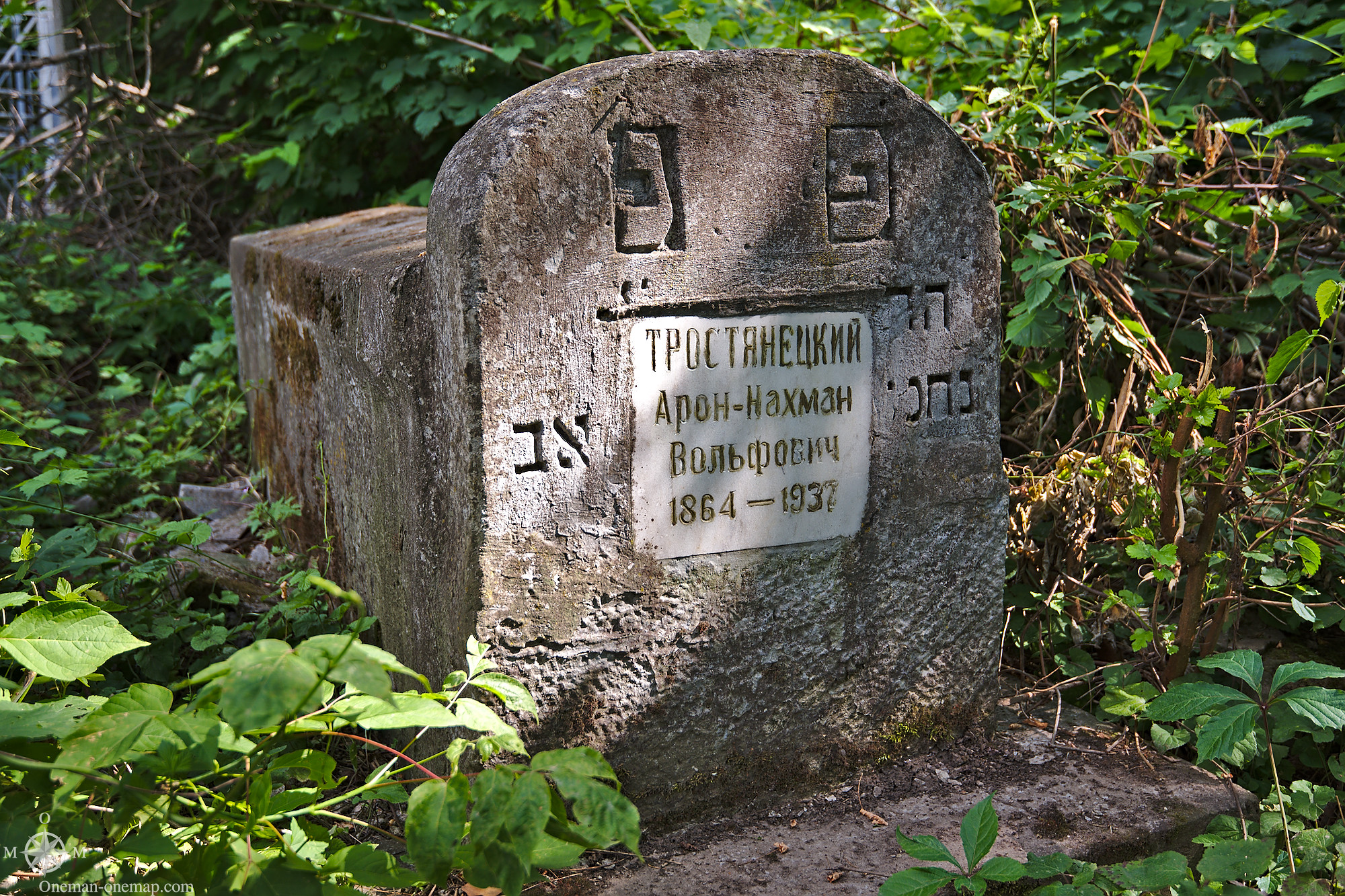
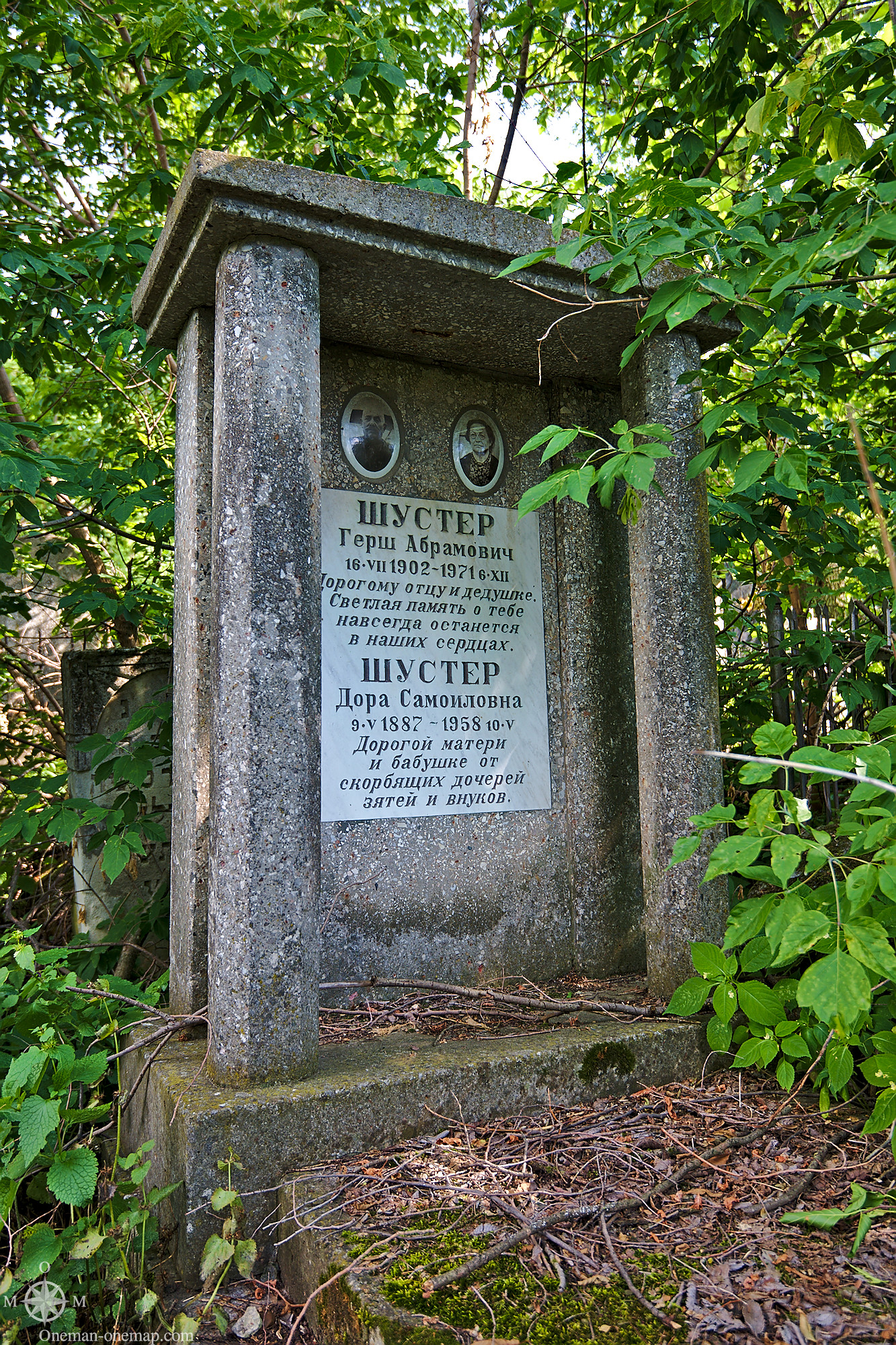
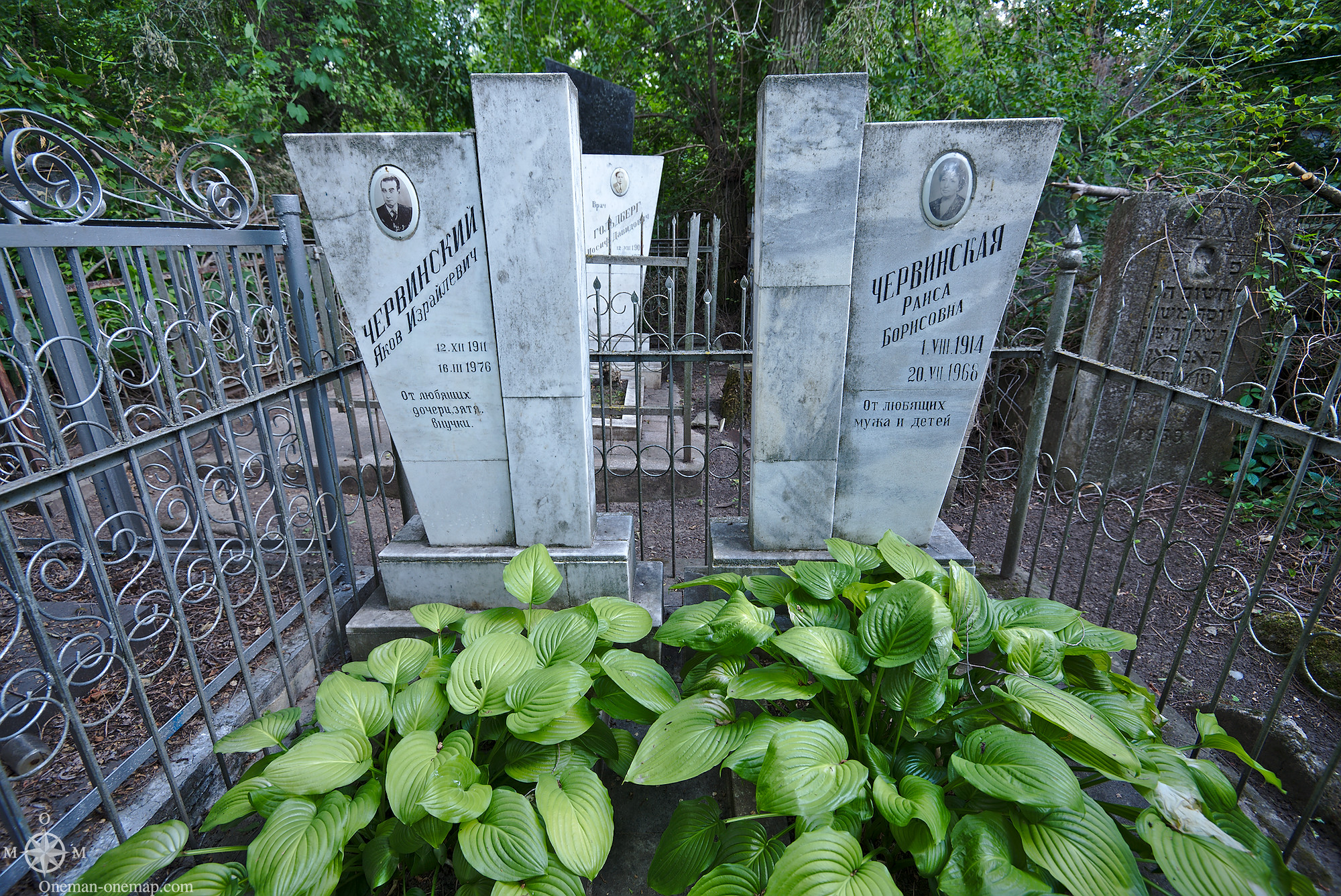
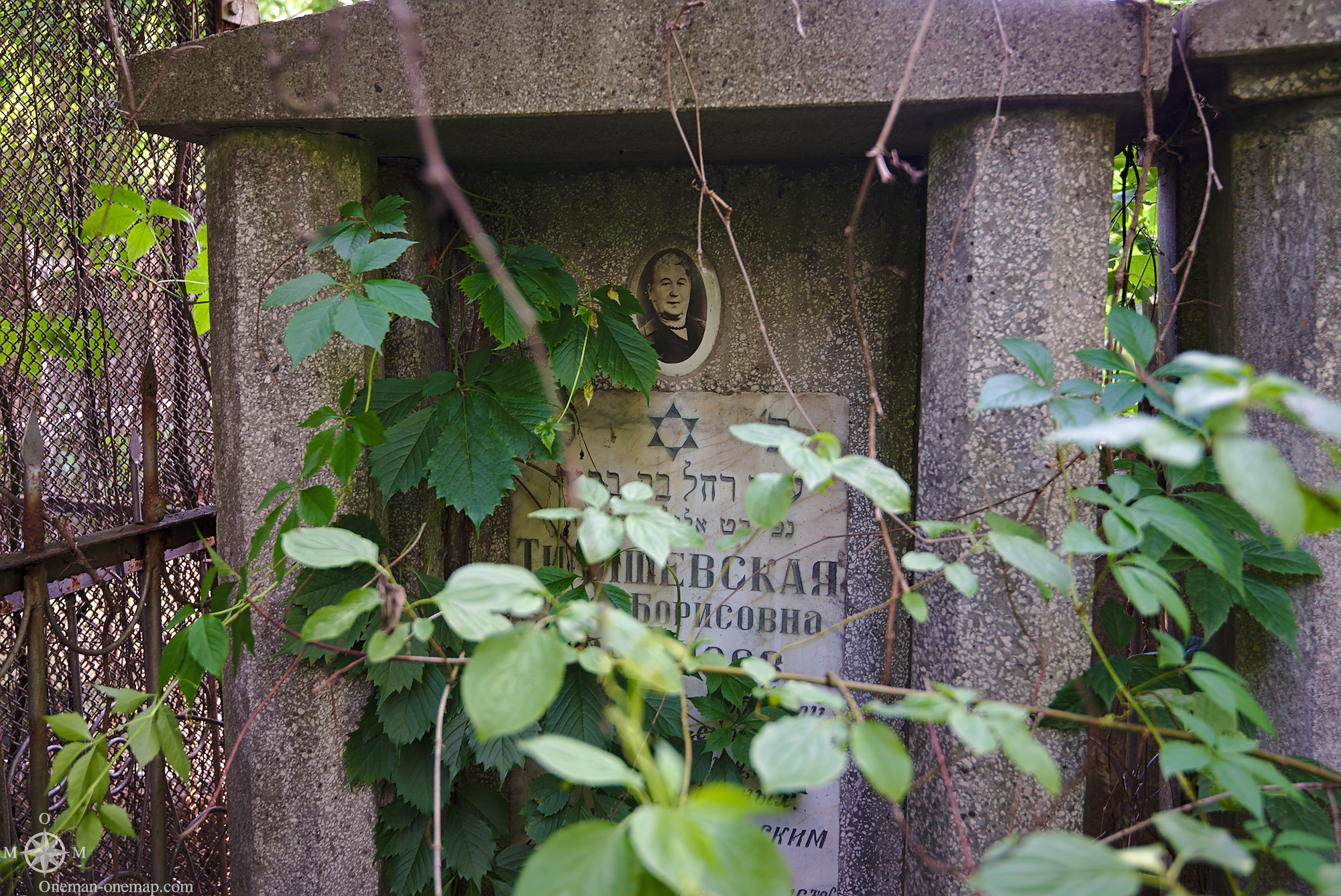
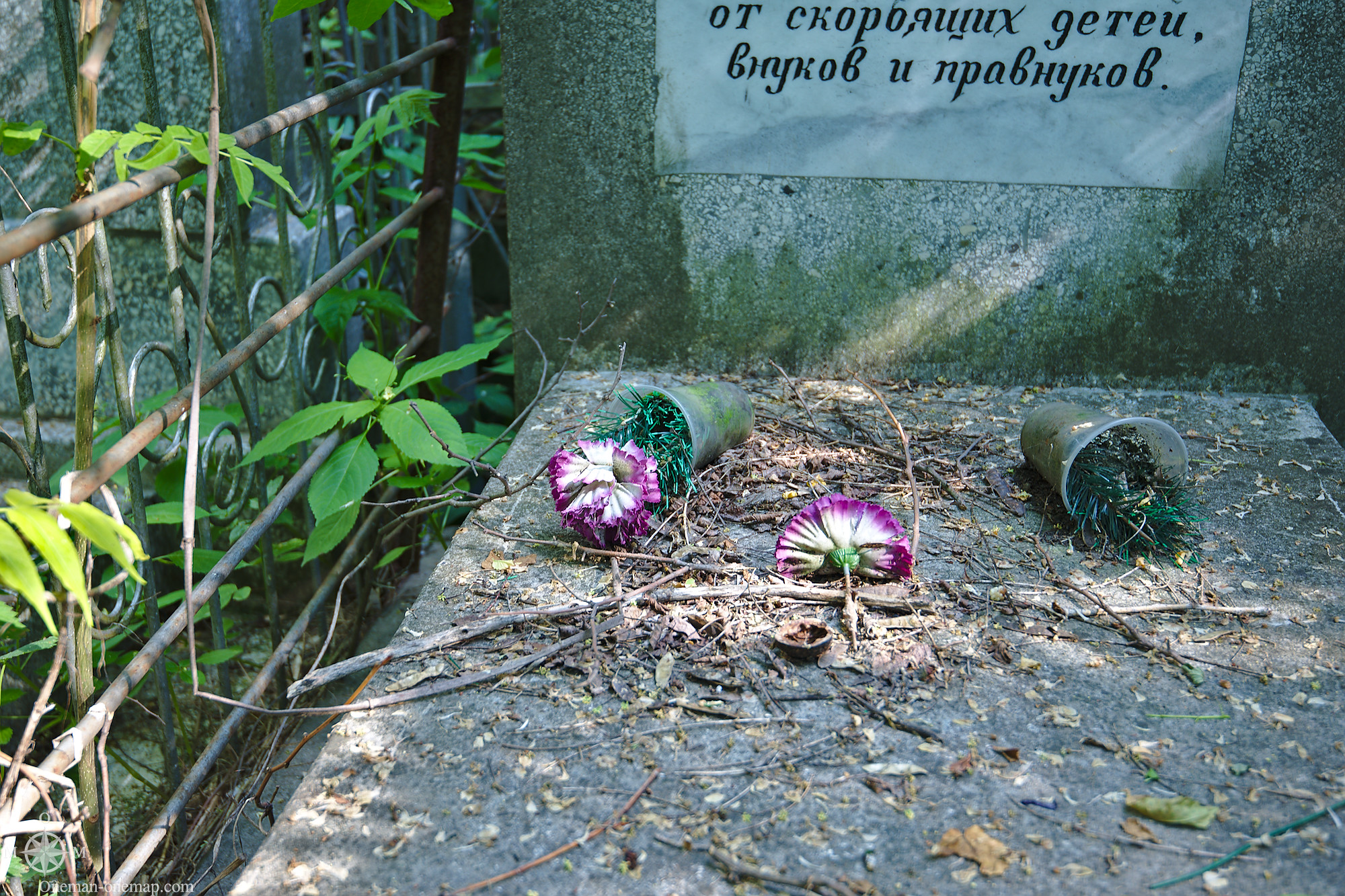
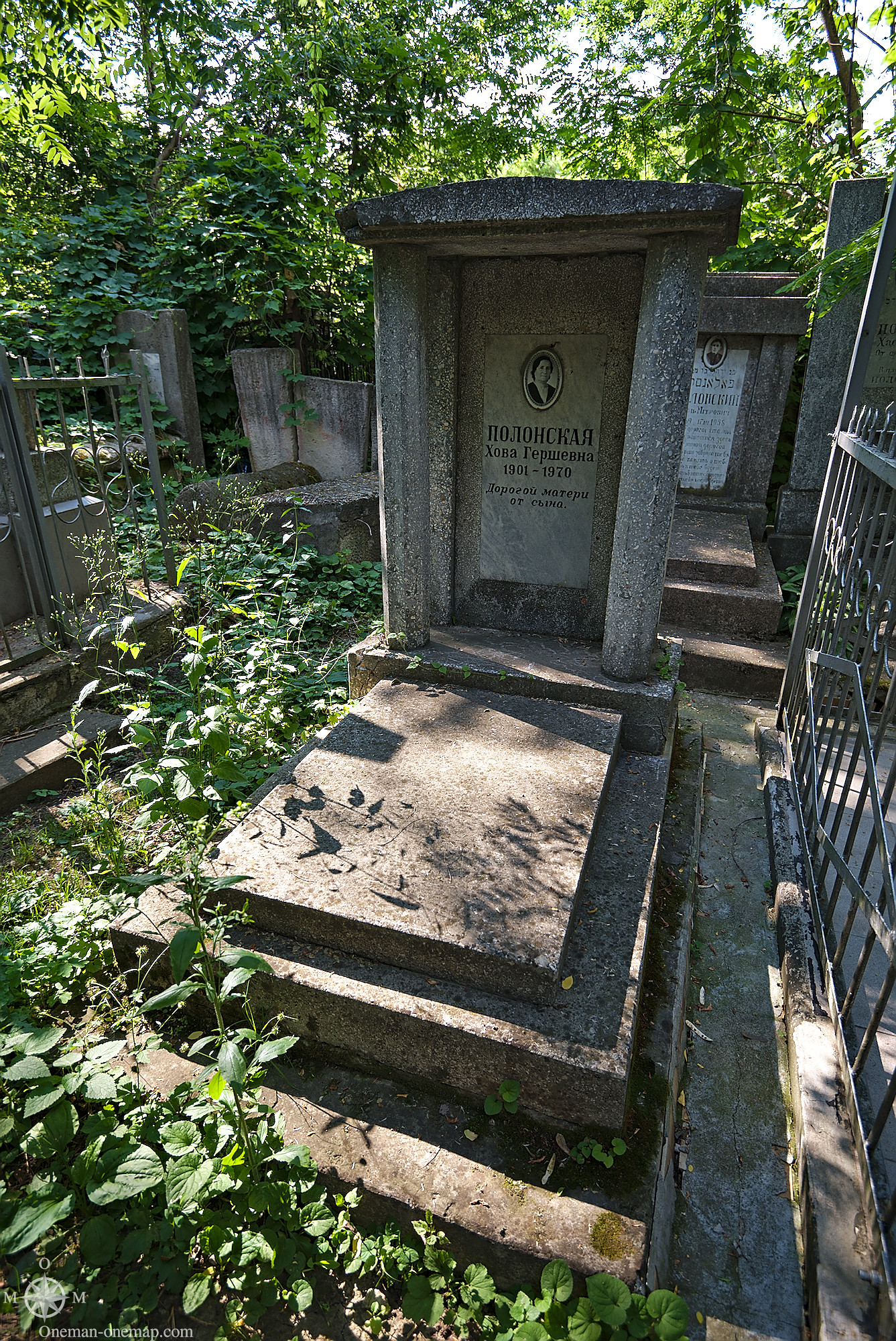
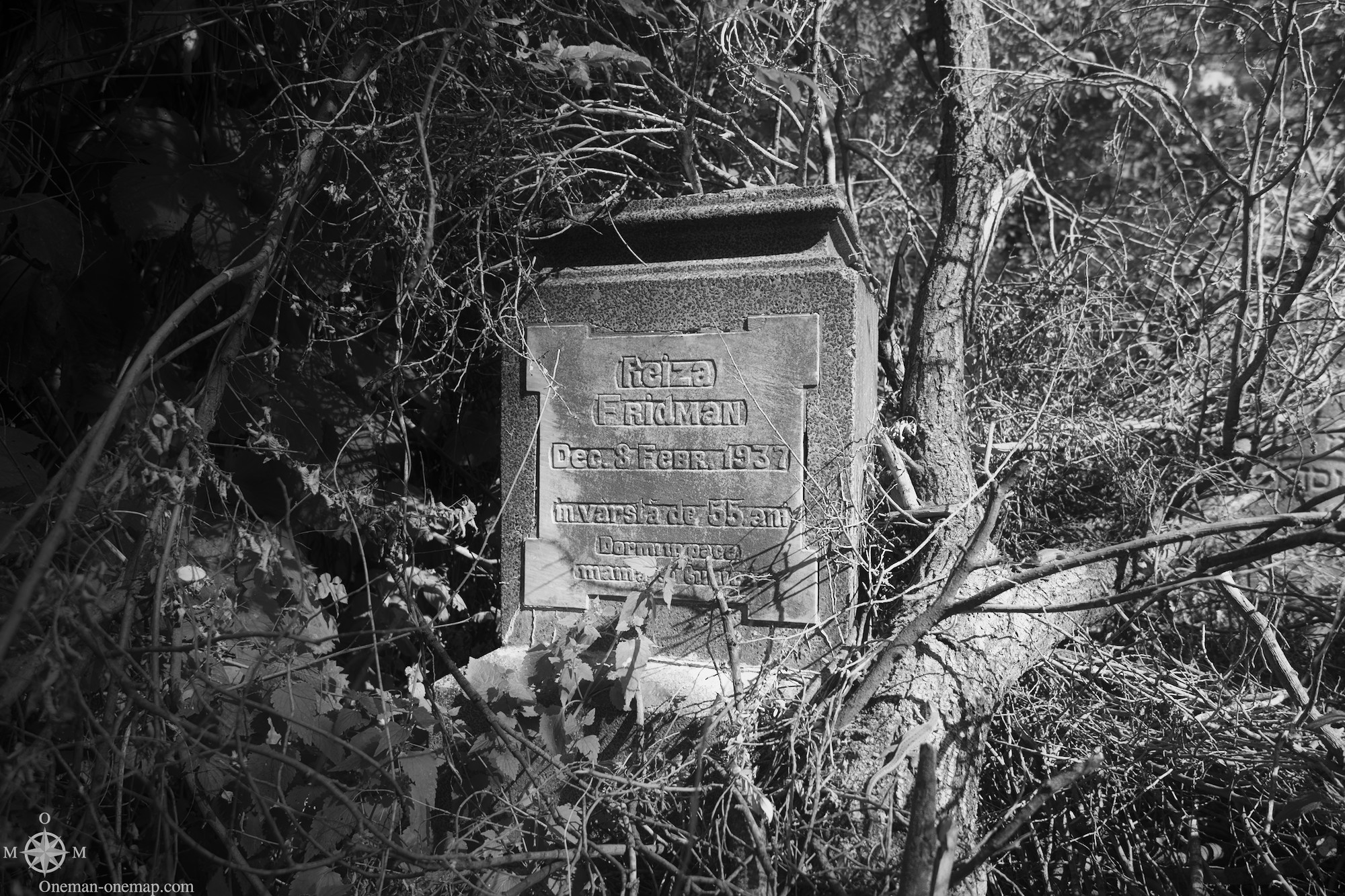
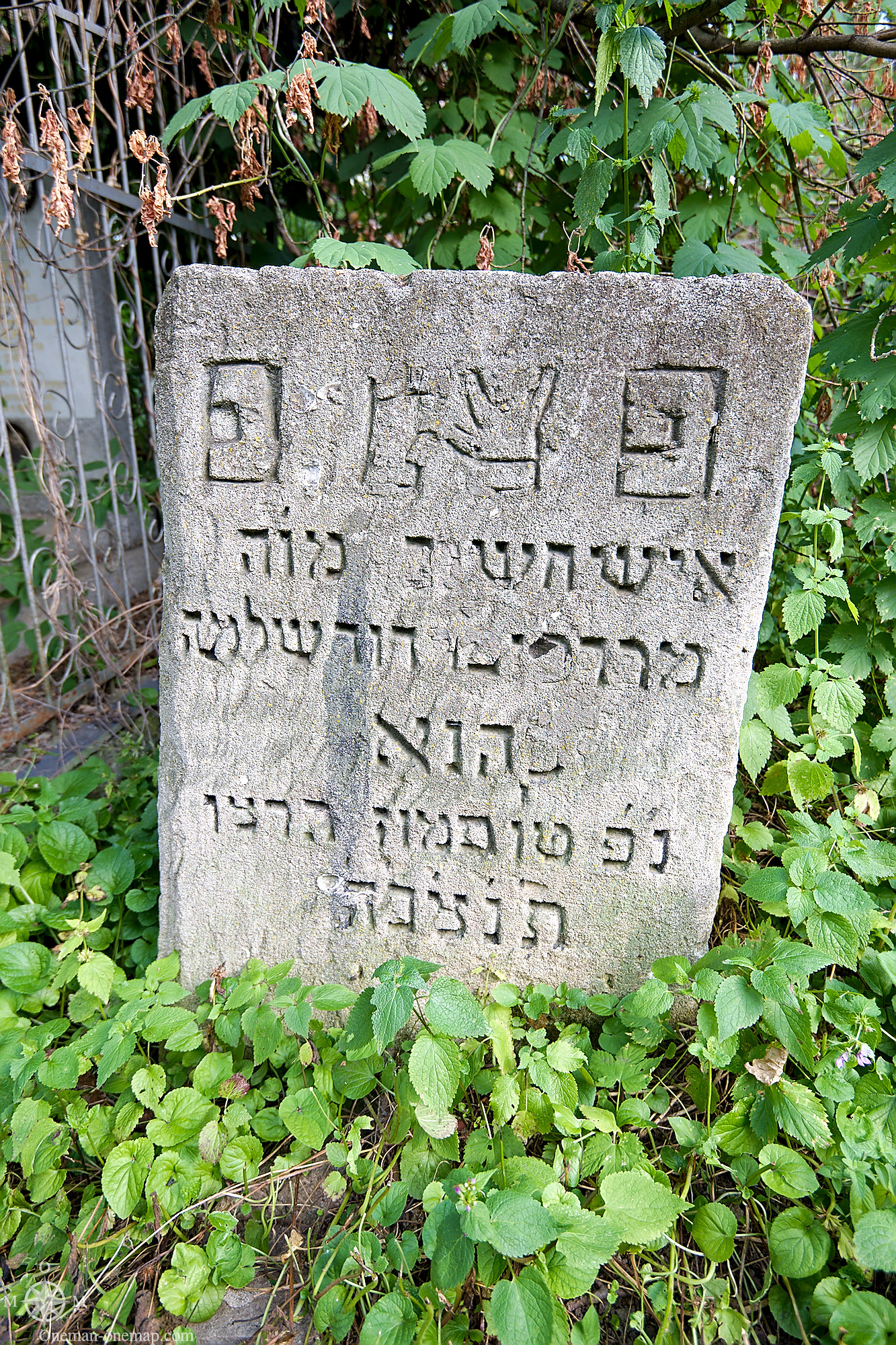
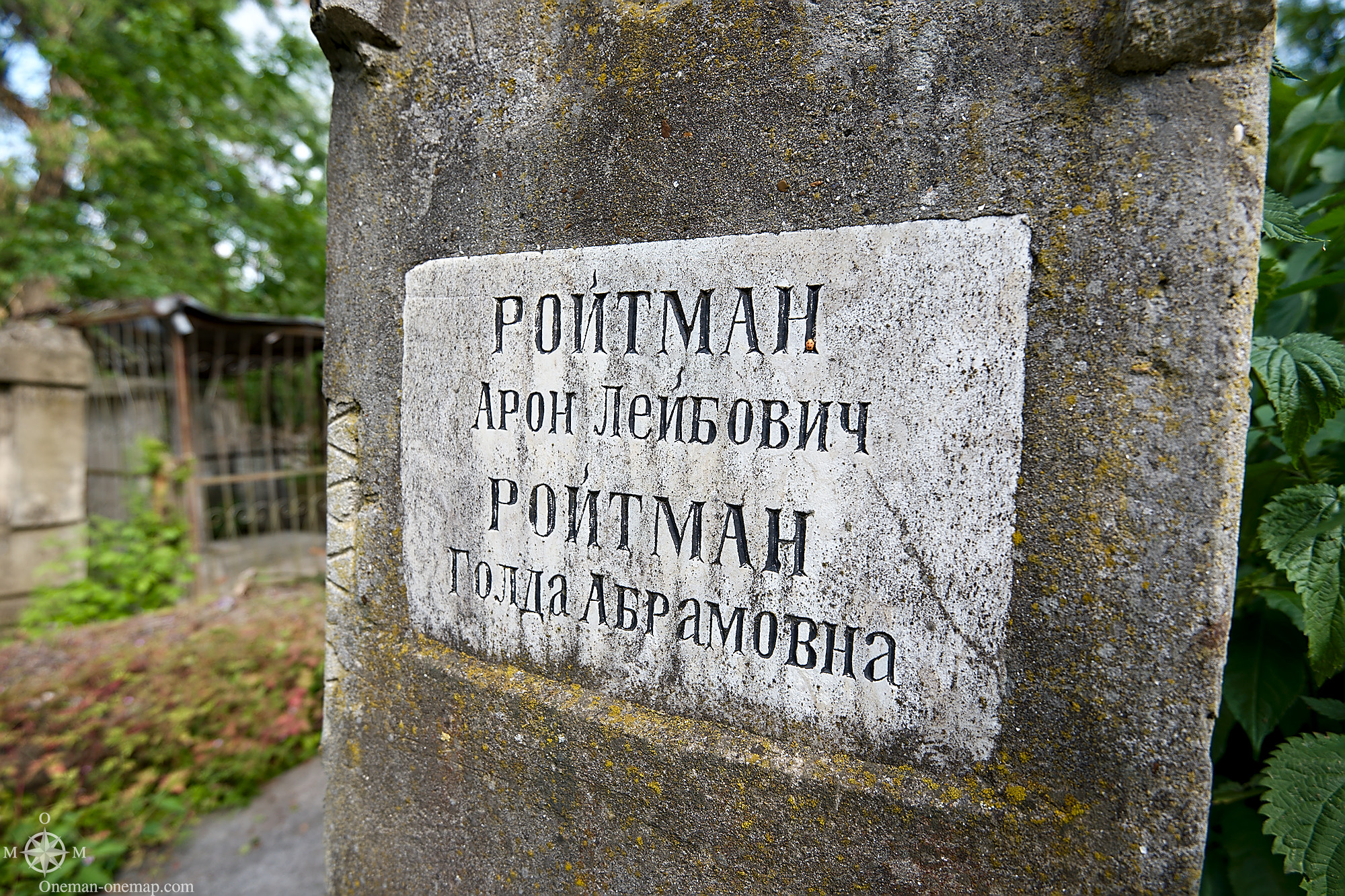
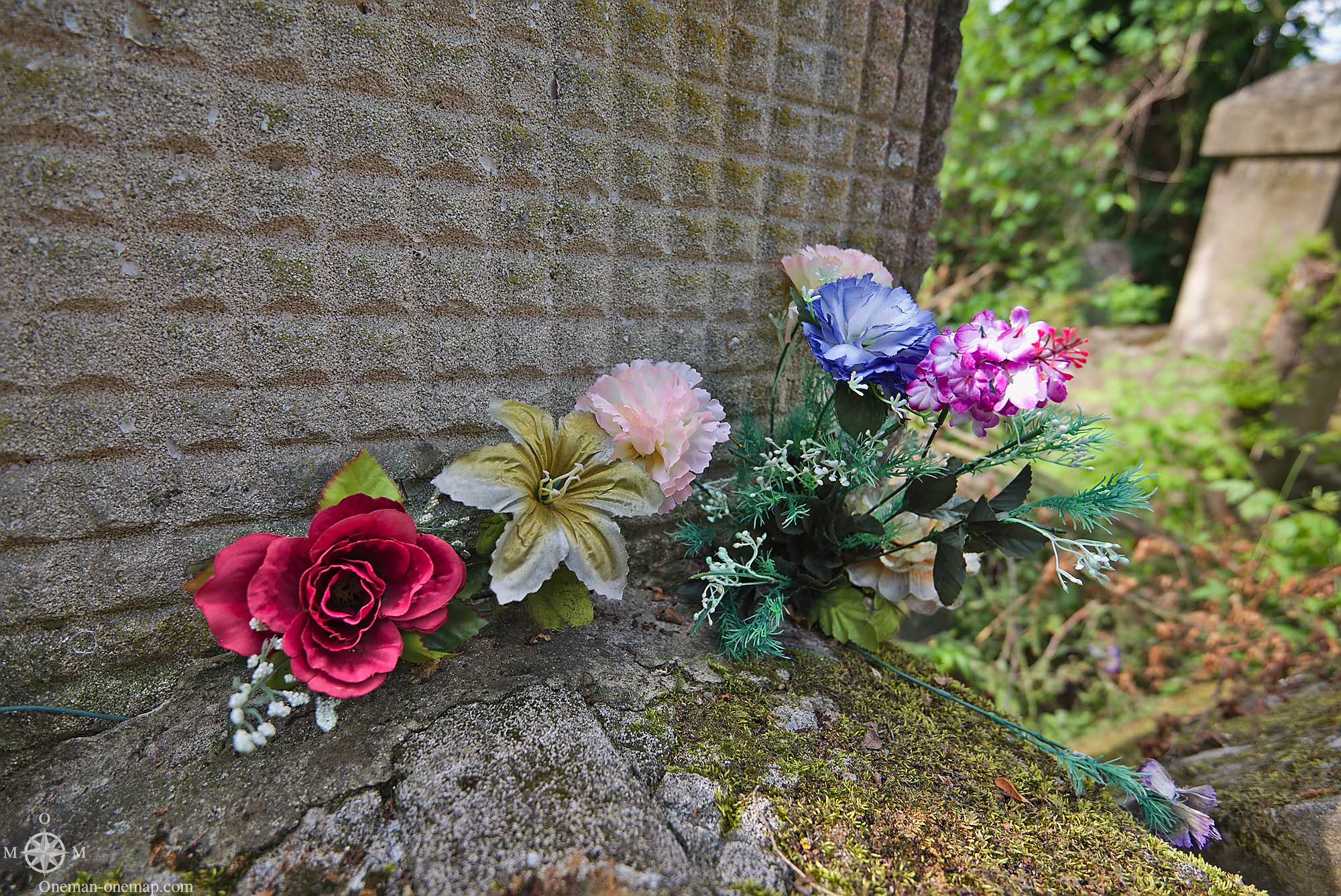
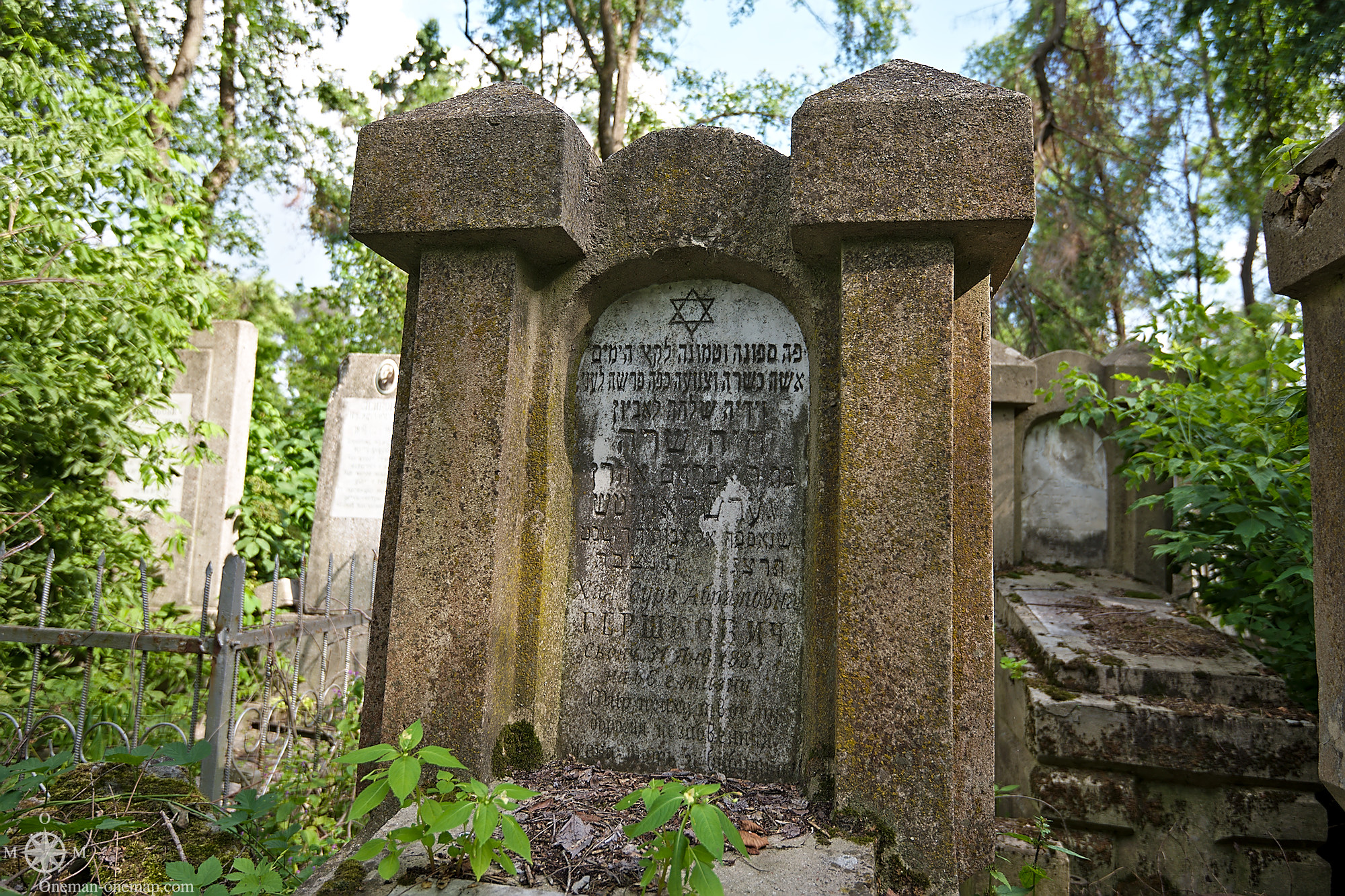
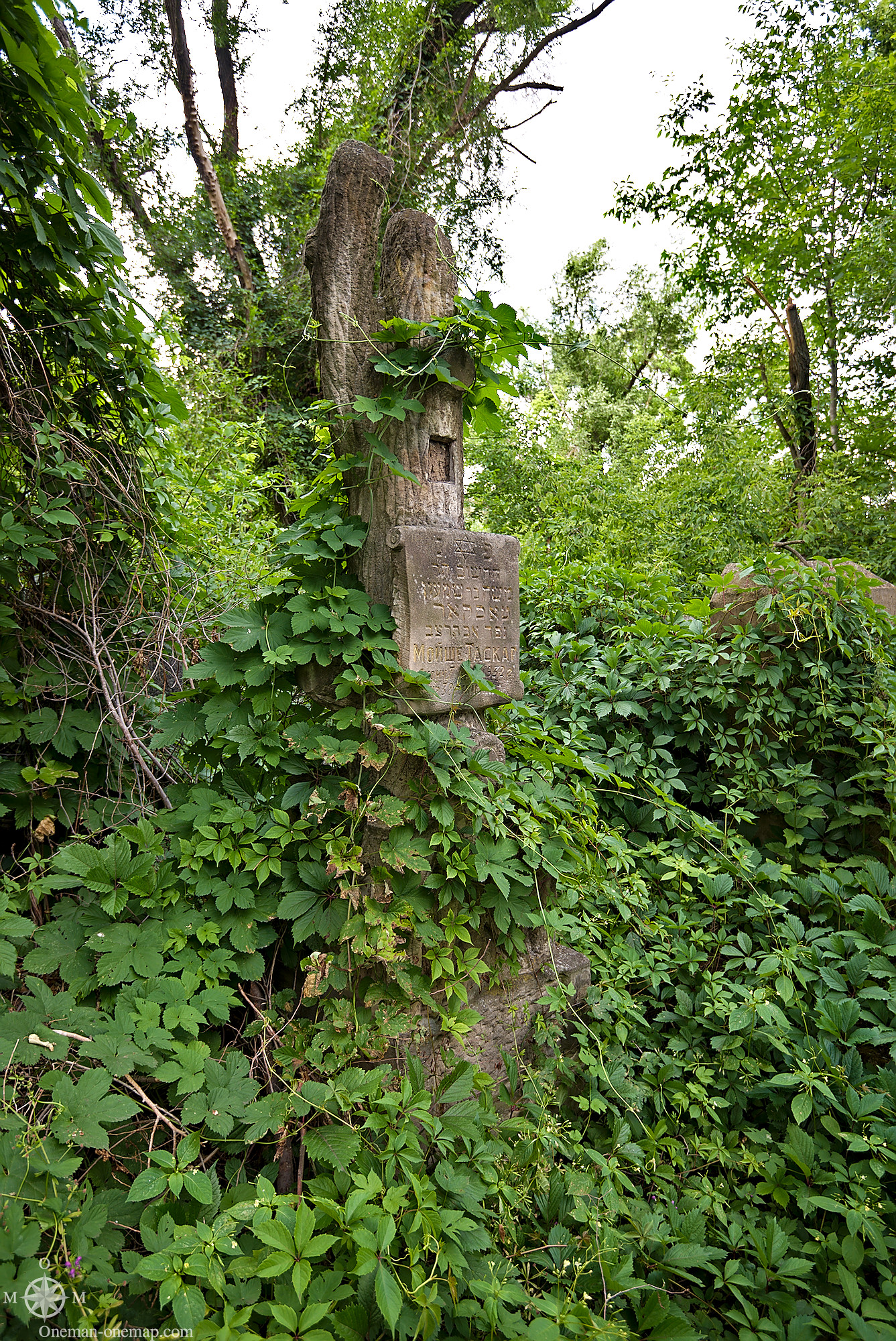
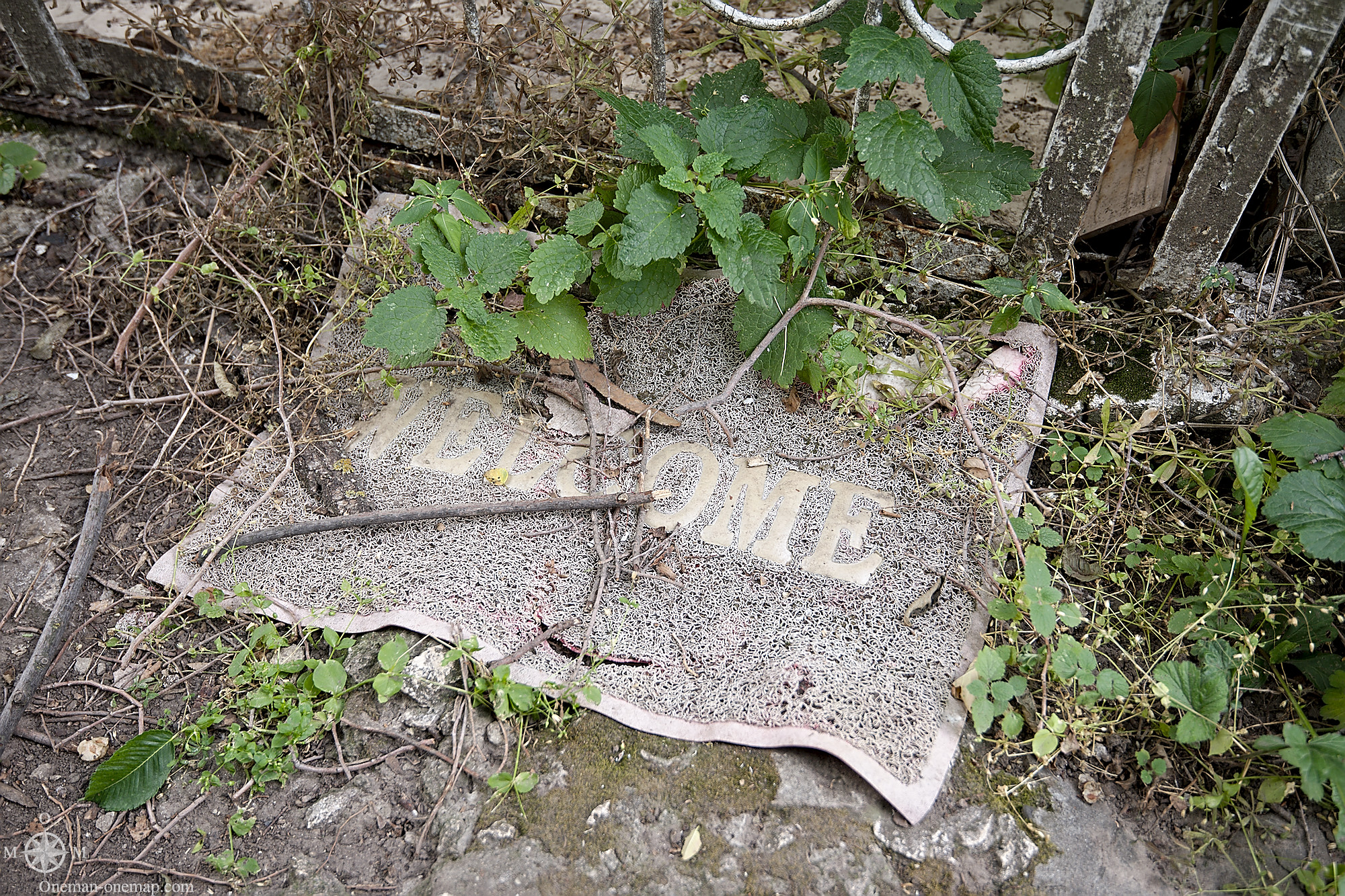
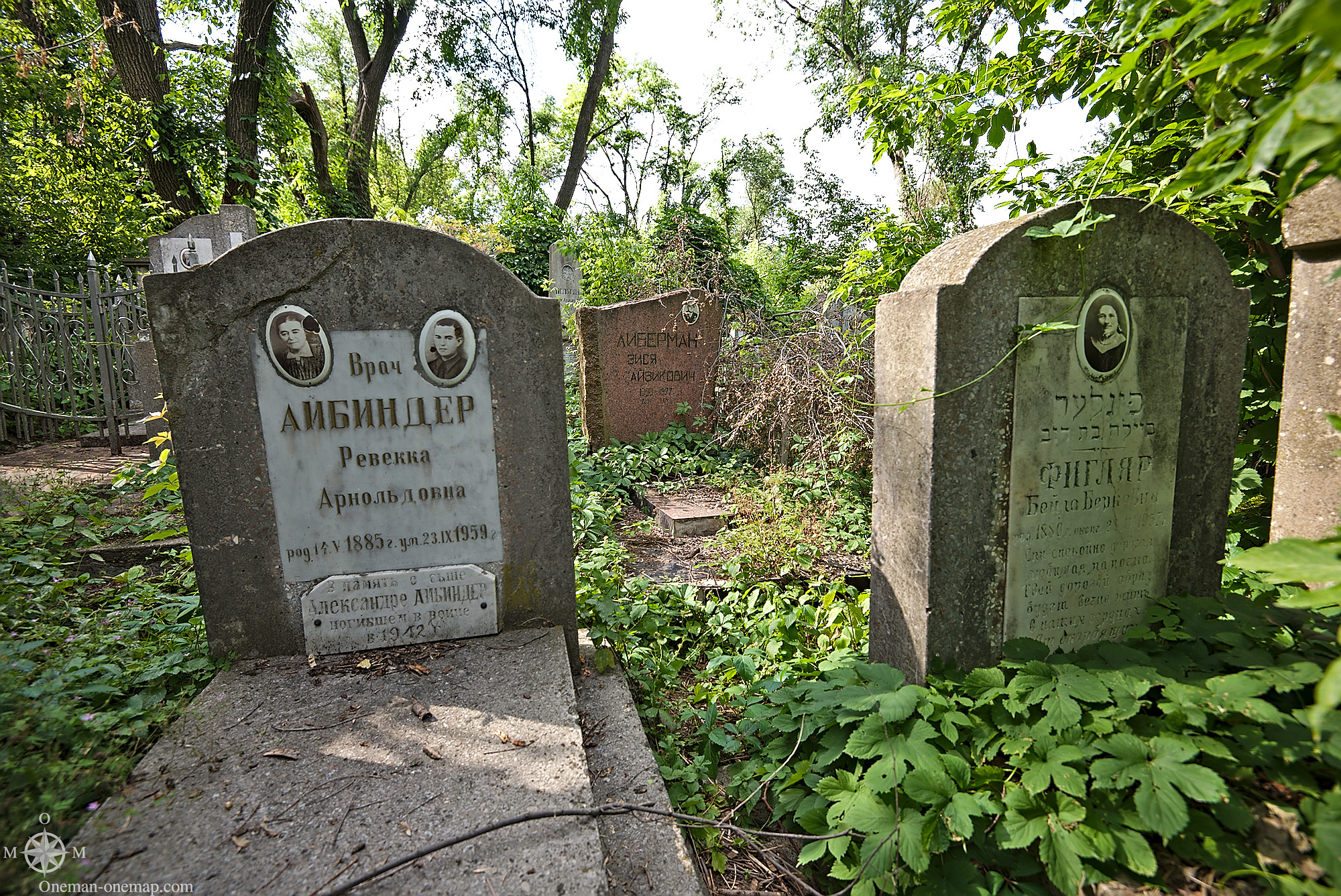
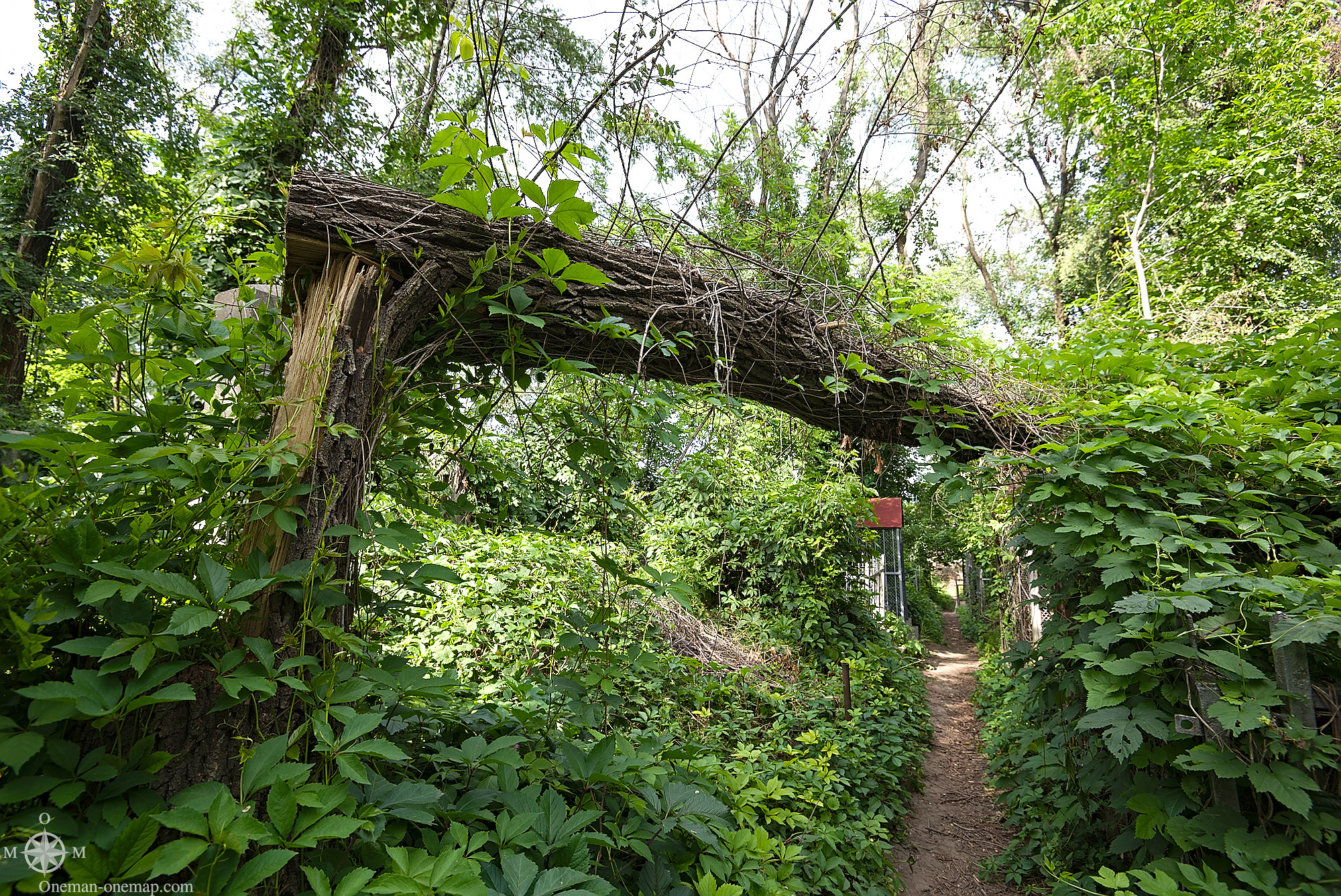
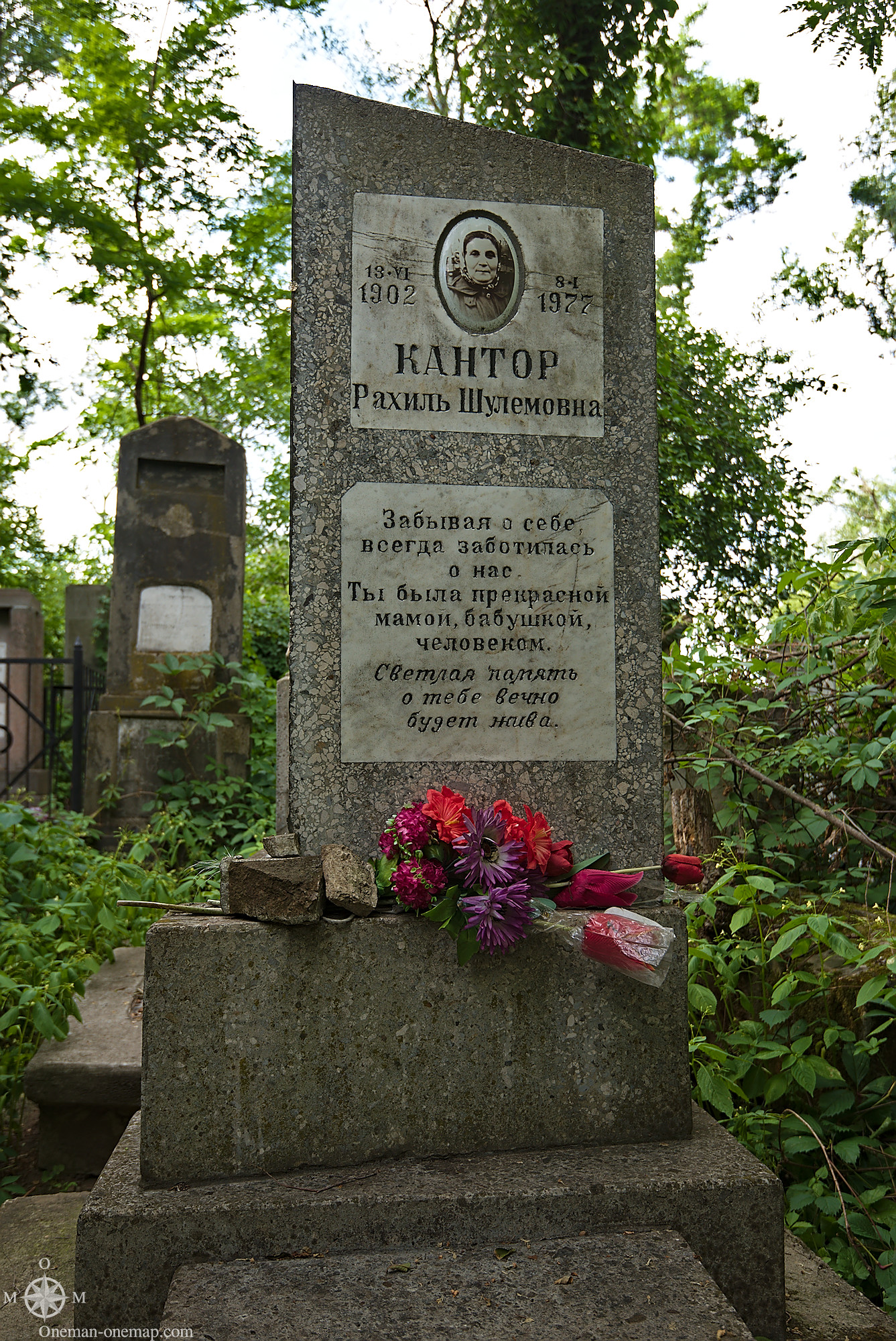
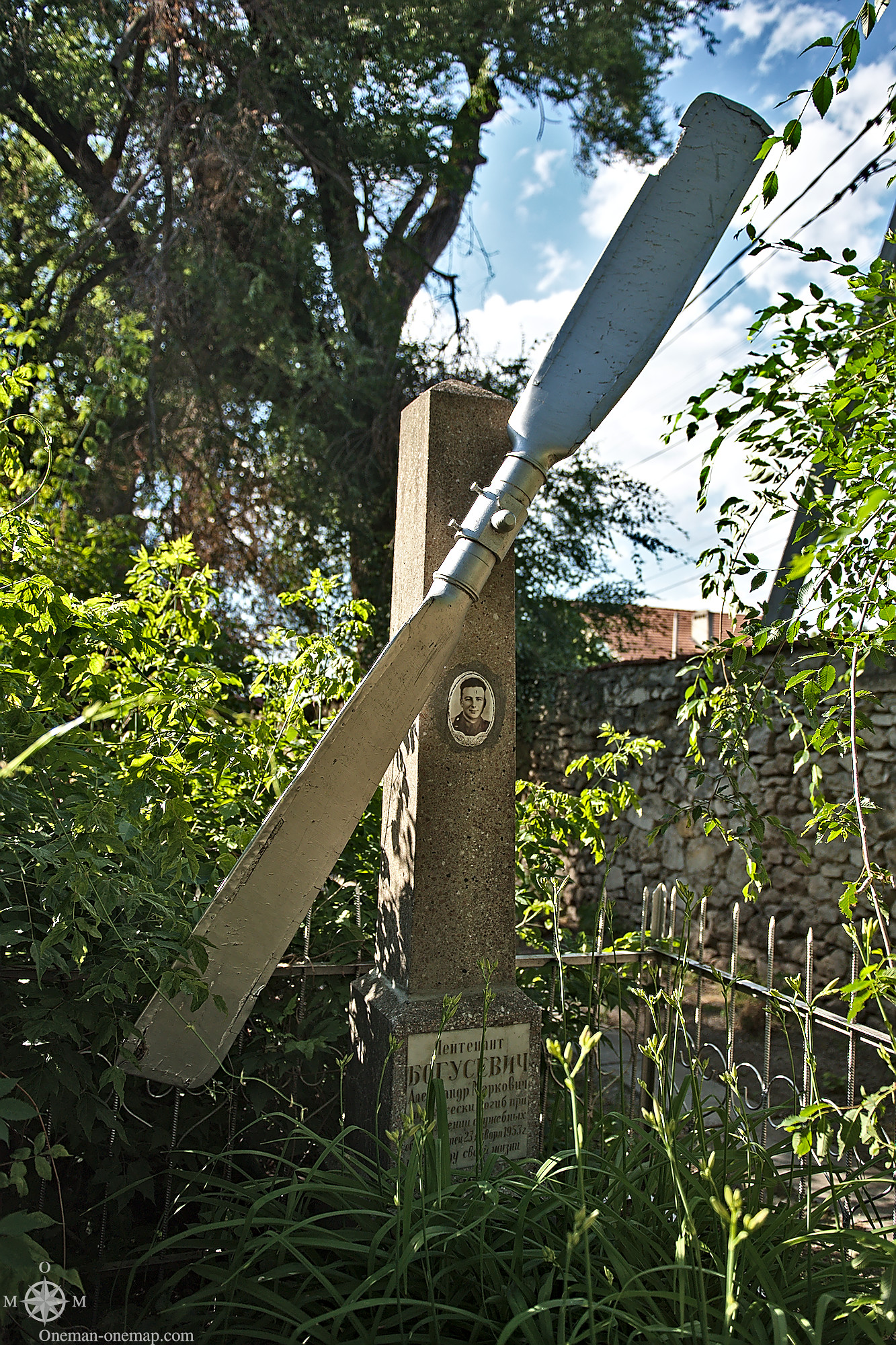
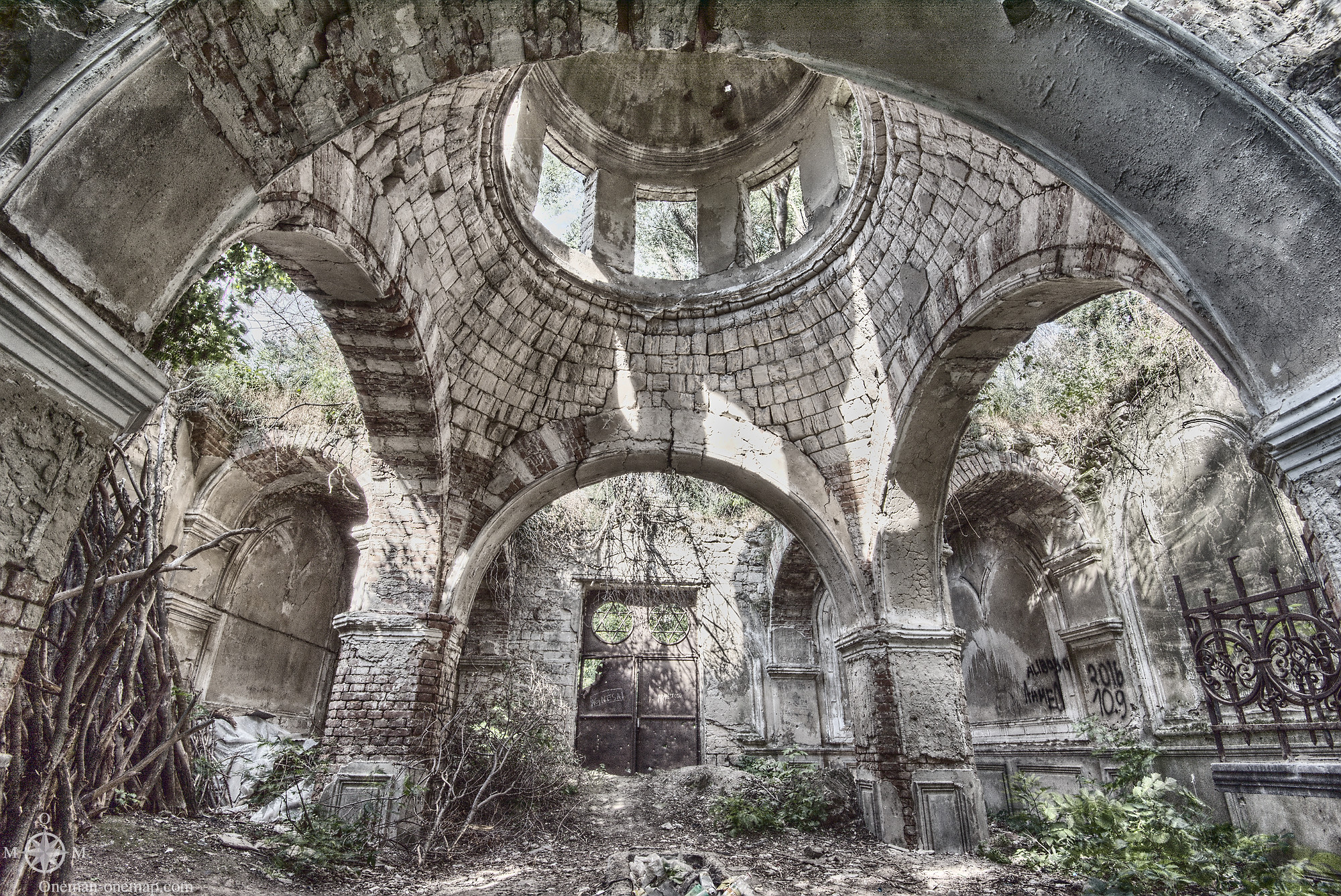
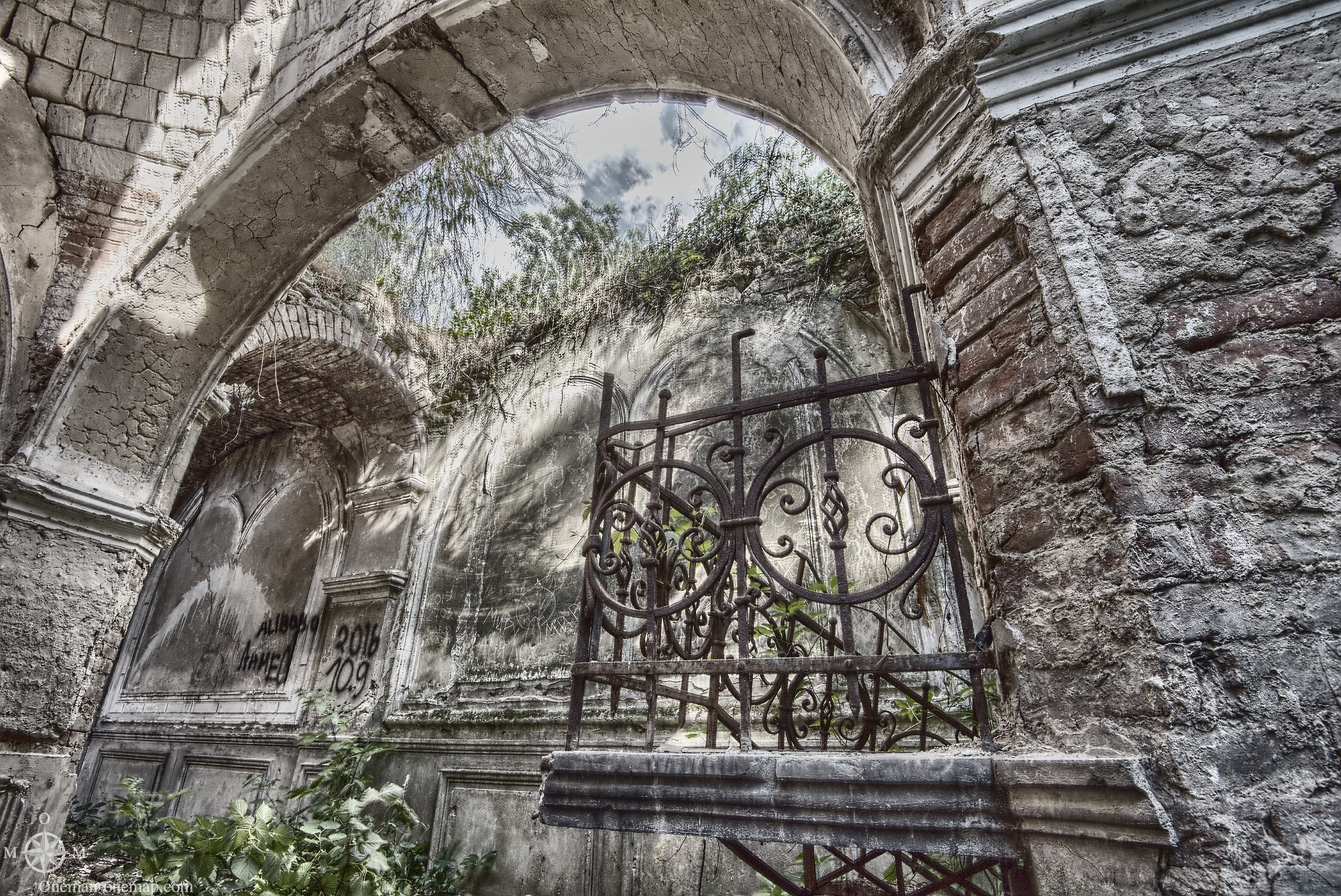
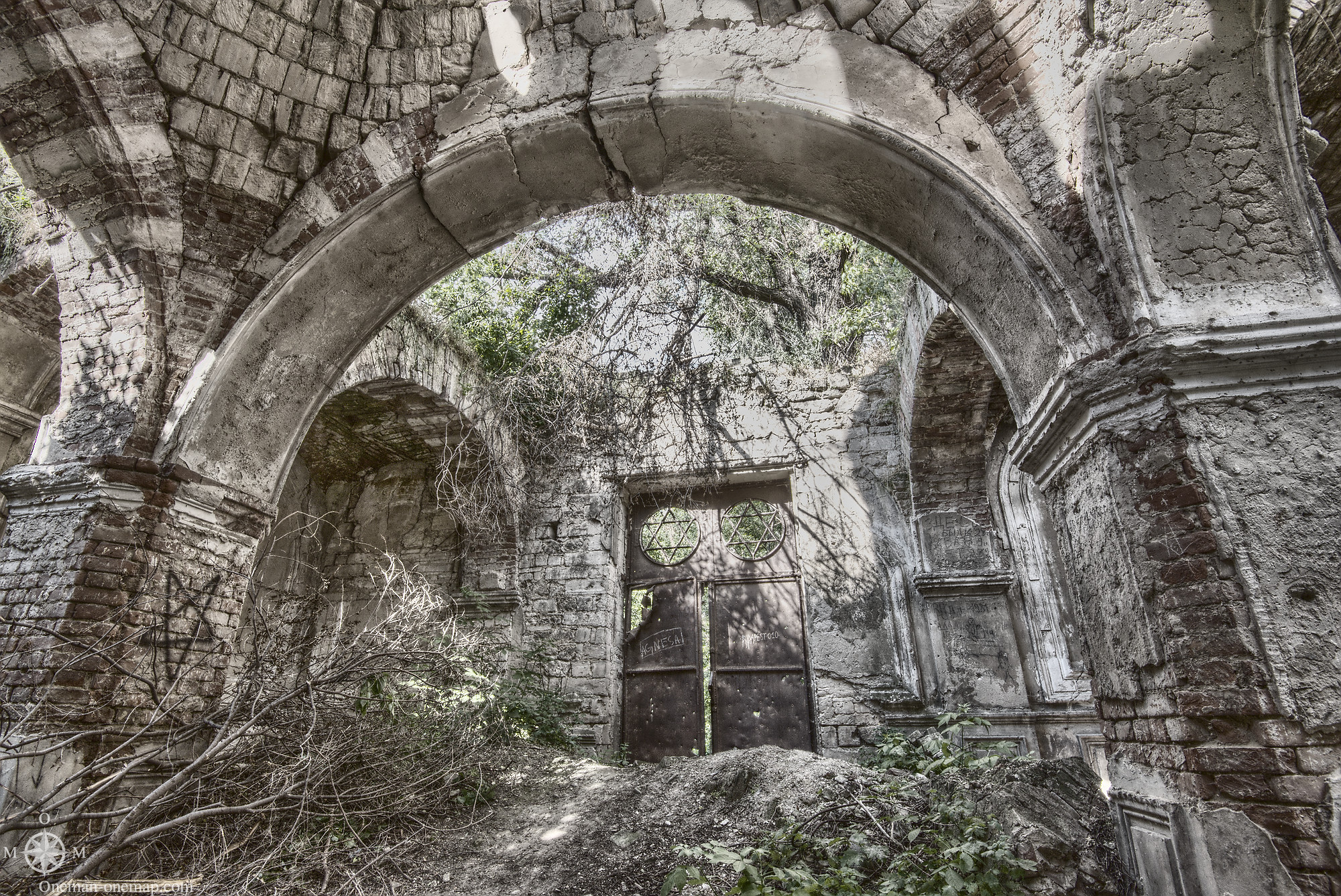
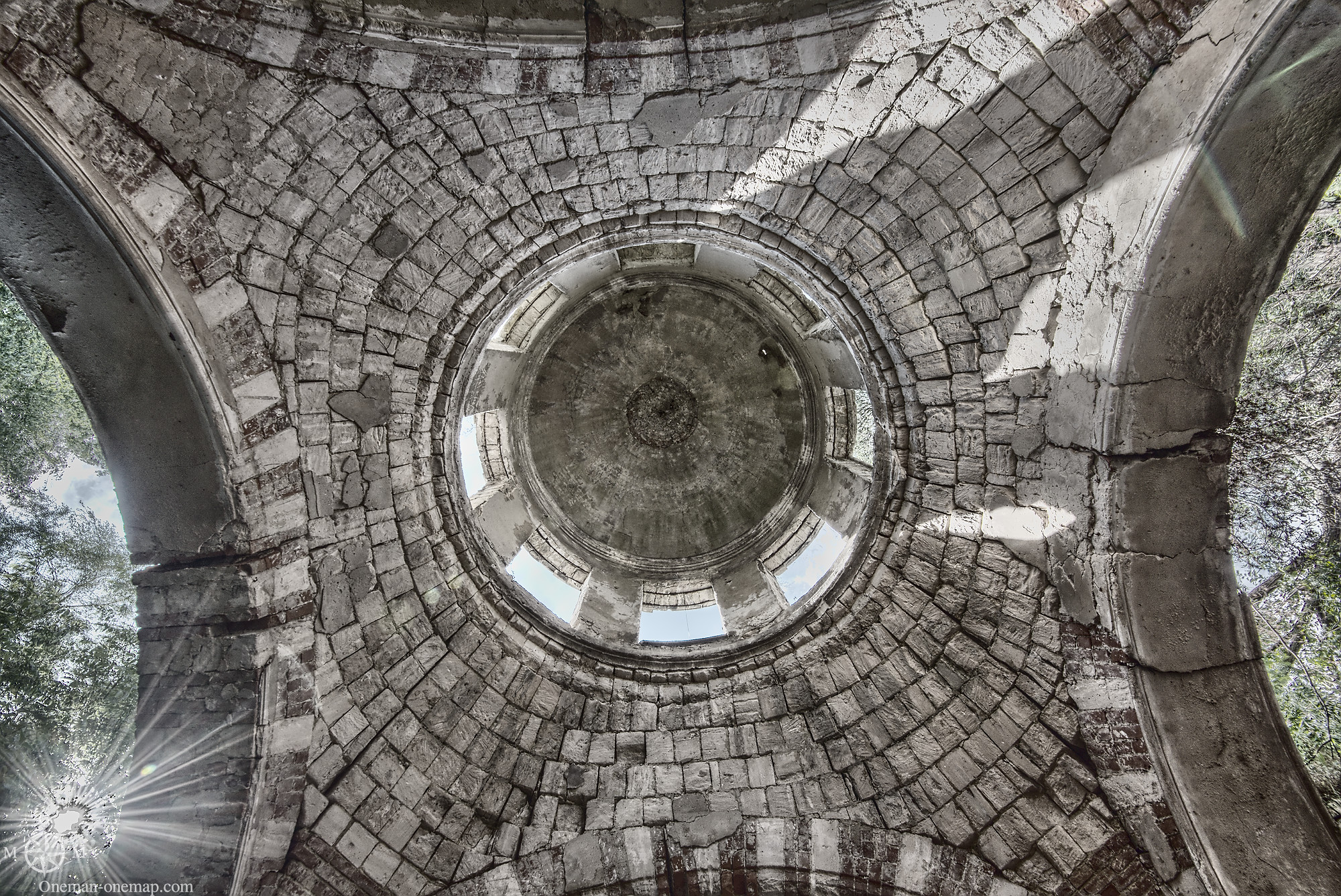
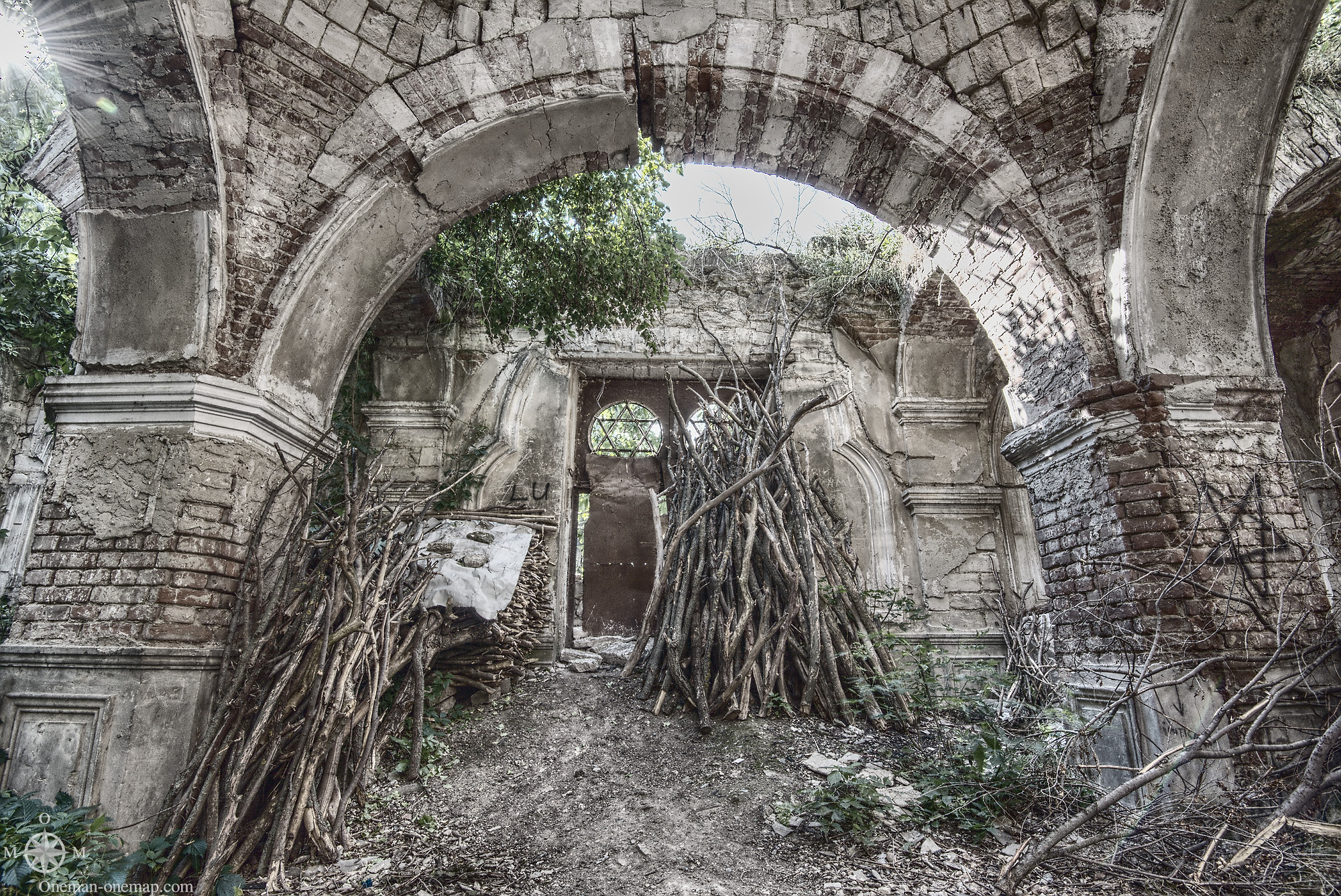
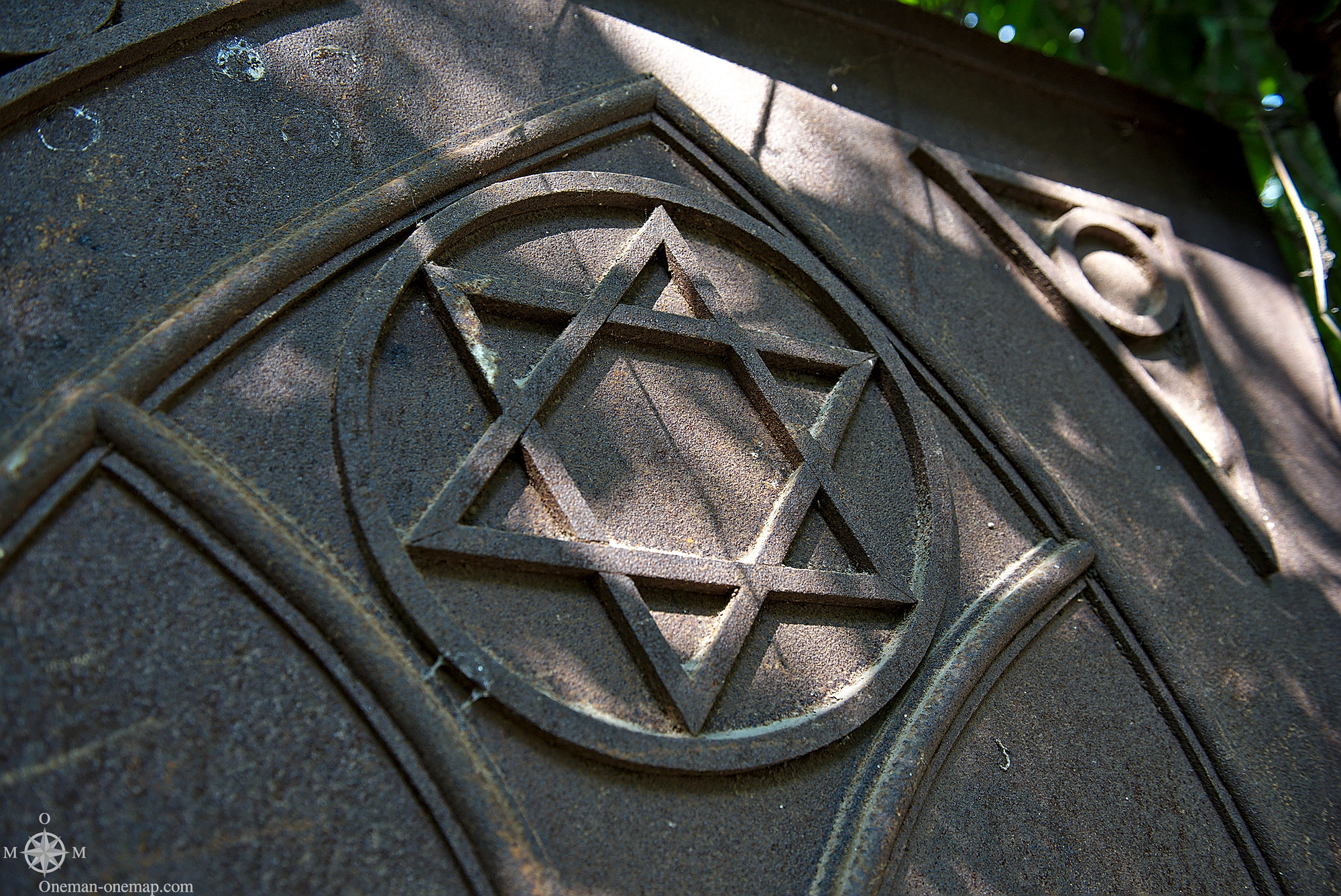
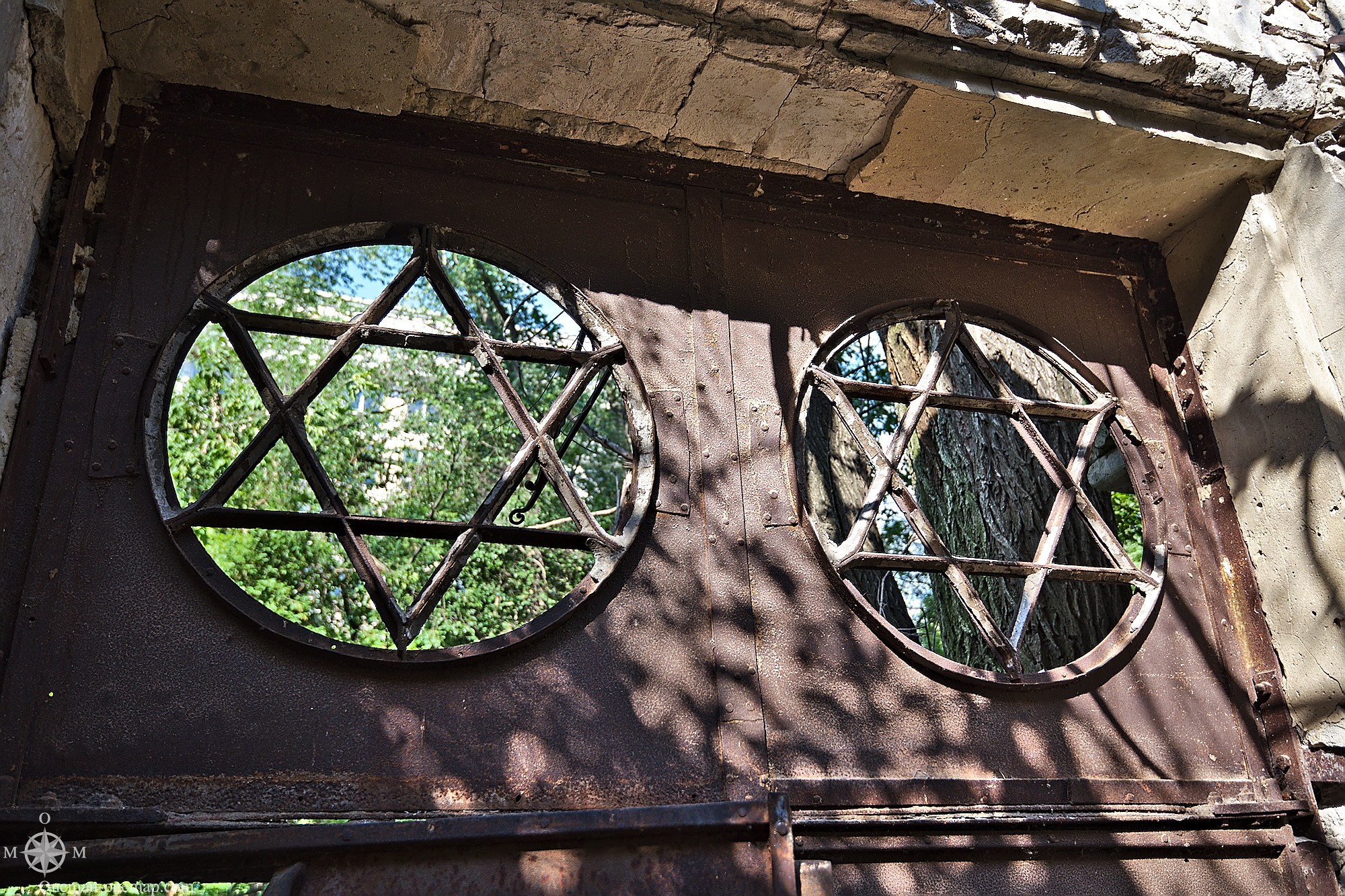
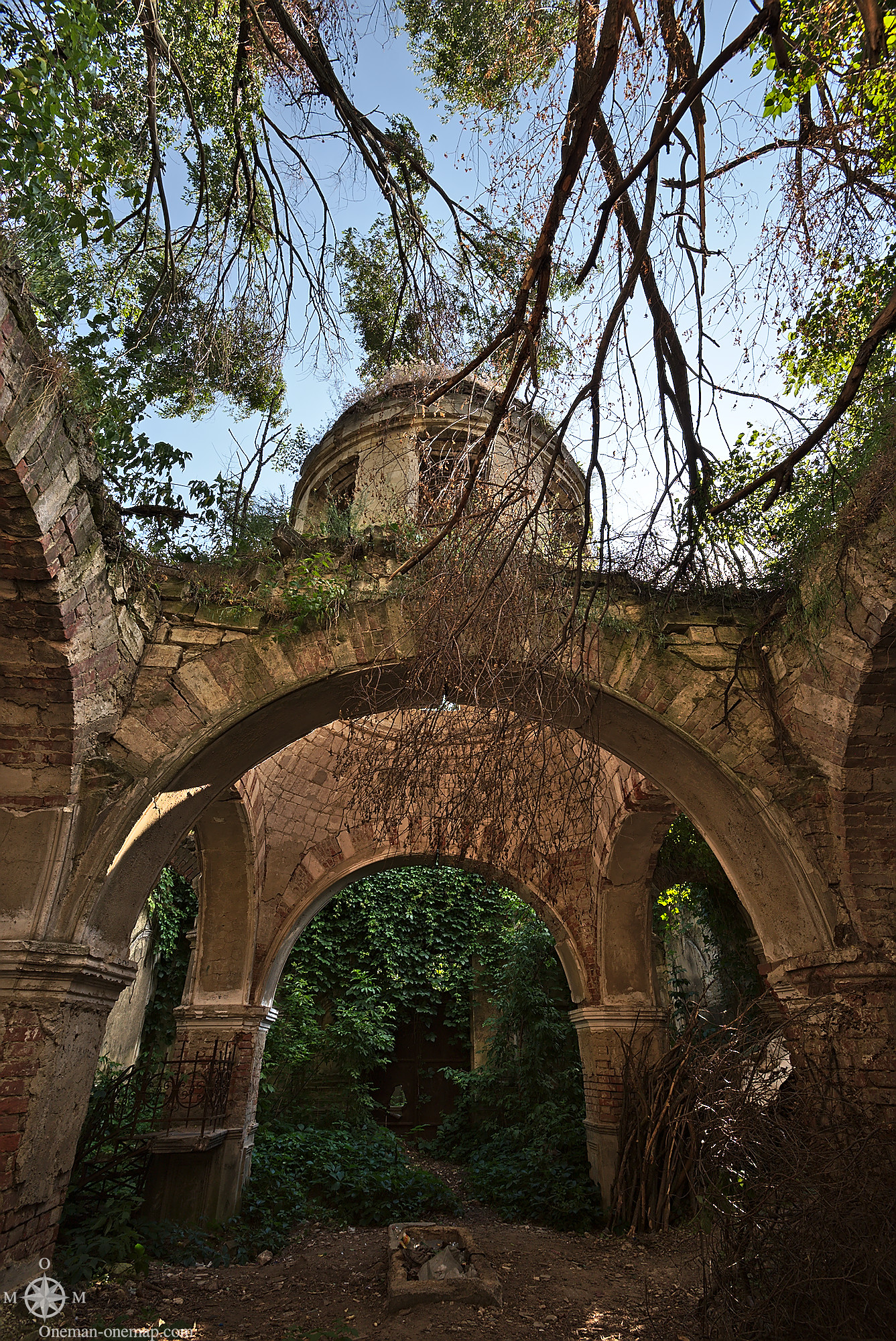
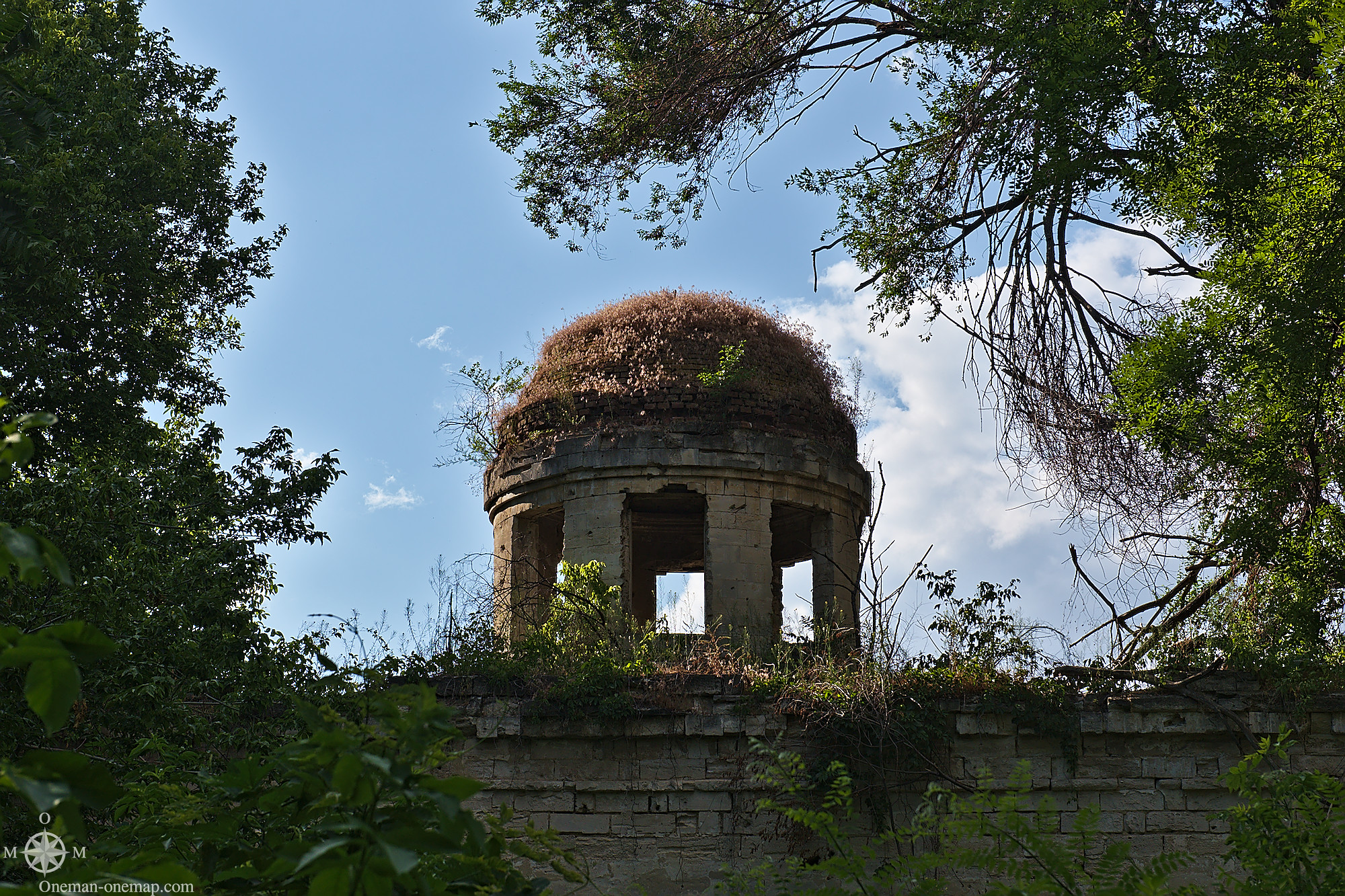
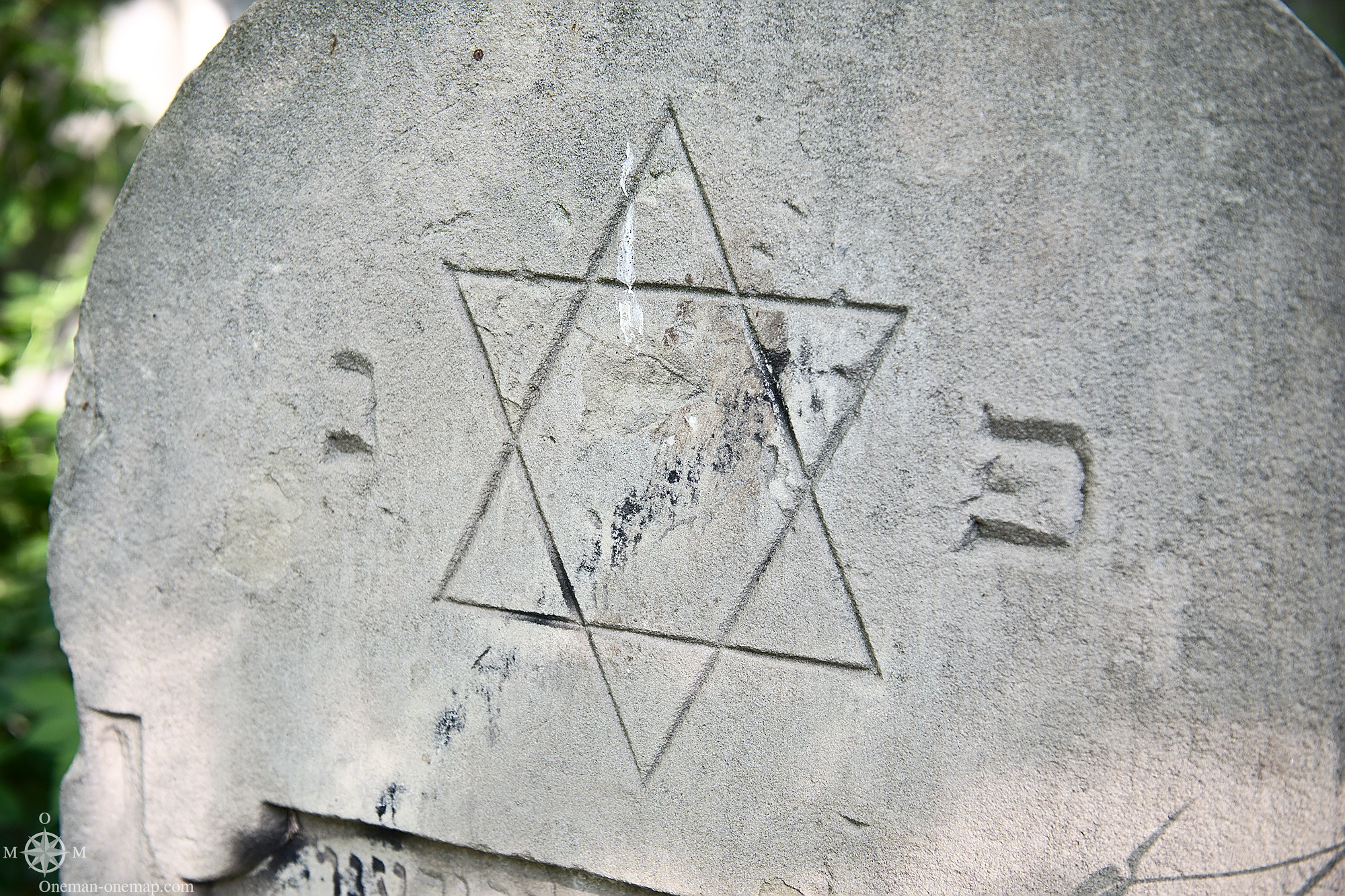
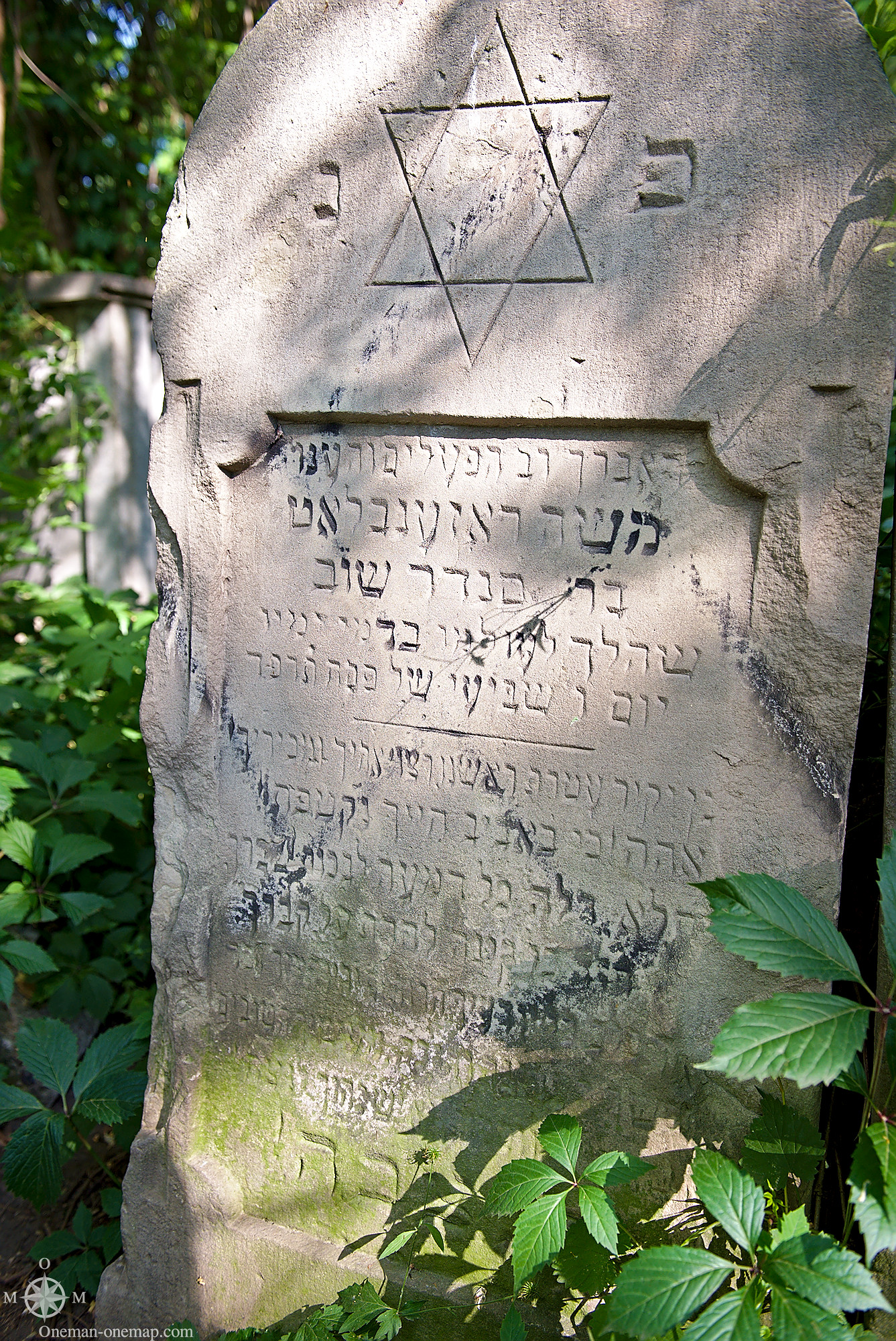
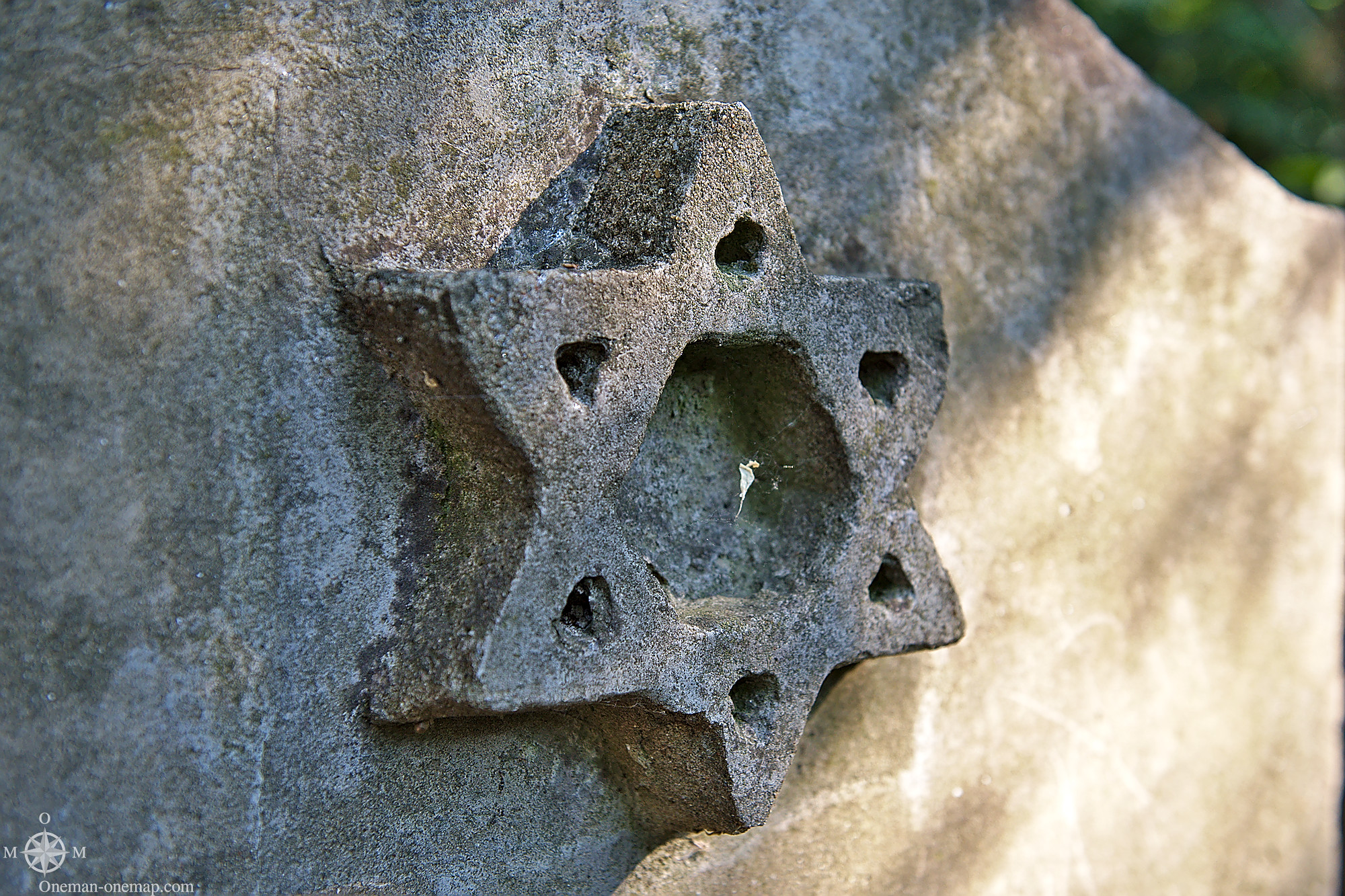
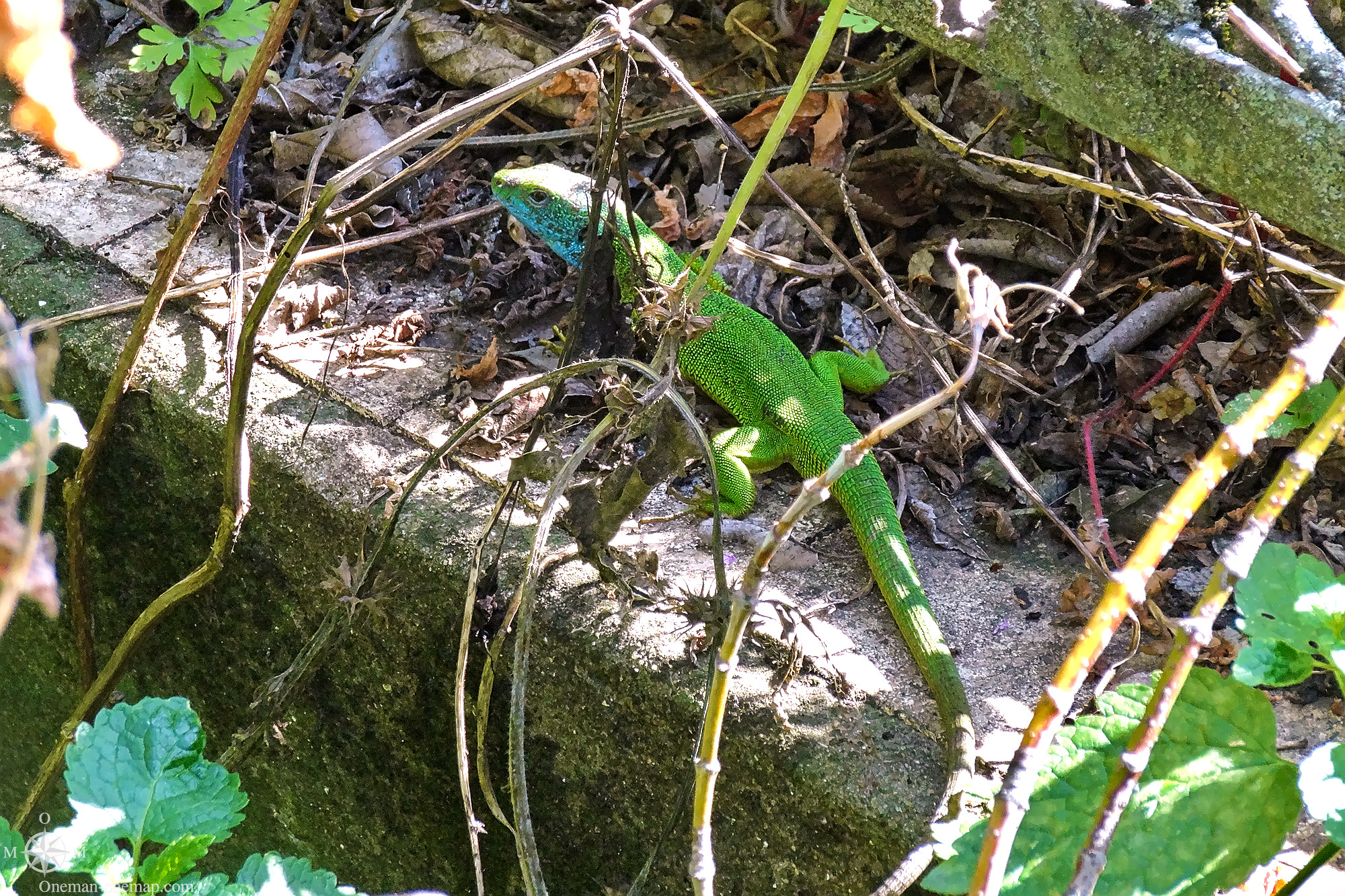

This is one of hundreds — thousands — of abandoned and neglected Jewish cemeteries in Europe (mainly eastern Eurooe) — which I have been documenting and writing about for many years. You can find a lot more information about these cemeteries, including photos — and the efforts that are going on to protect, document, and preserve them — on the web site I direct, http://www.jewish-heritage-europe.eu …. also on my Jewish travel blog jewish-heritage-travel.blogspot.com and the web site I maintain about the way women are portrayed in Jewish tombstone art candlesticksonstone.wordpress.com
Dear Ruth,
thanks for all the information! I’ll put some of the links in the article itself later. The documentary “A Vanished World” about the Jewish Cemeteries in Moldova seems to be particulary interesting.
There have also been volunteer cemetery clean-ups at the Chisinau cemetery — I’m sure there are probably more than what I put on the web site.
Thank you for this post and the wonderful photos. I’m two years into researching my family’s ancestry which is largely centered in Kishinev and have confirmed that I have family buried here but alas, I do not have the first clue as to how to try to locate them. I’m aware via JewishGen that they’ve partnered with the city to clean the natural overgro wth and debris, and they’ve indexed the gravesites that can be indexed but my family surname still does not come up anywhere. Would you have any advice as to where I could turn to get help? Anything you can offer would be so much appreciated.
Alexander Bogusevich, a photograph of whose grave, decorated with a tombstone with a propeller, is given here, was a lieutenant and commander of the crew of the Li-2 aircraft (a Soviet licensed version of the American DC-3). He died in an air crash near the Kazan airport on January 23, 1953.
Link to an article on Wiki in Russian
Столкновение над Казанью (1953)
https://ru.wikipedia.org/wiki/%D0%A1%D1%82%D0%BE%D0%BB%D0%BA%D0%BD%D0%BE%D0%B2%D0%B5%D0%BD%D0%B8%D0%B5_%D0%BD%D0%B0%D0%B4_%D0%9A%D0%B0%D0%B7%D0%B0%D0%BD%D1%8C%D1%8E_(1953)